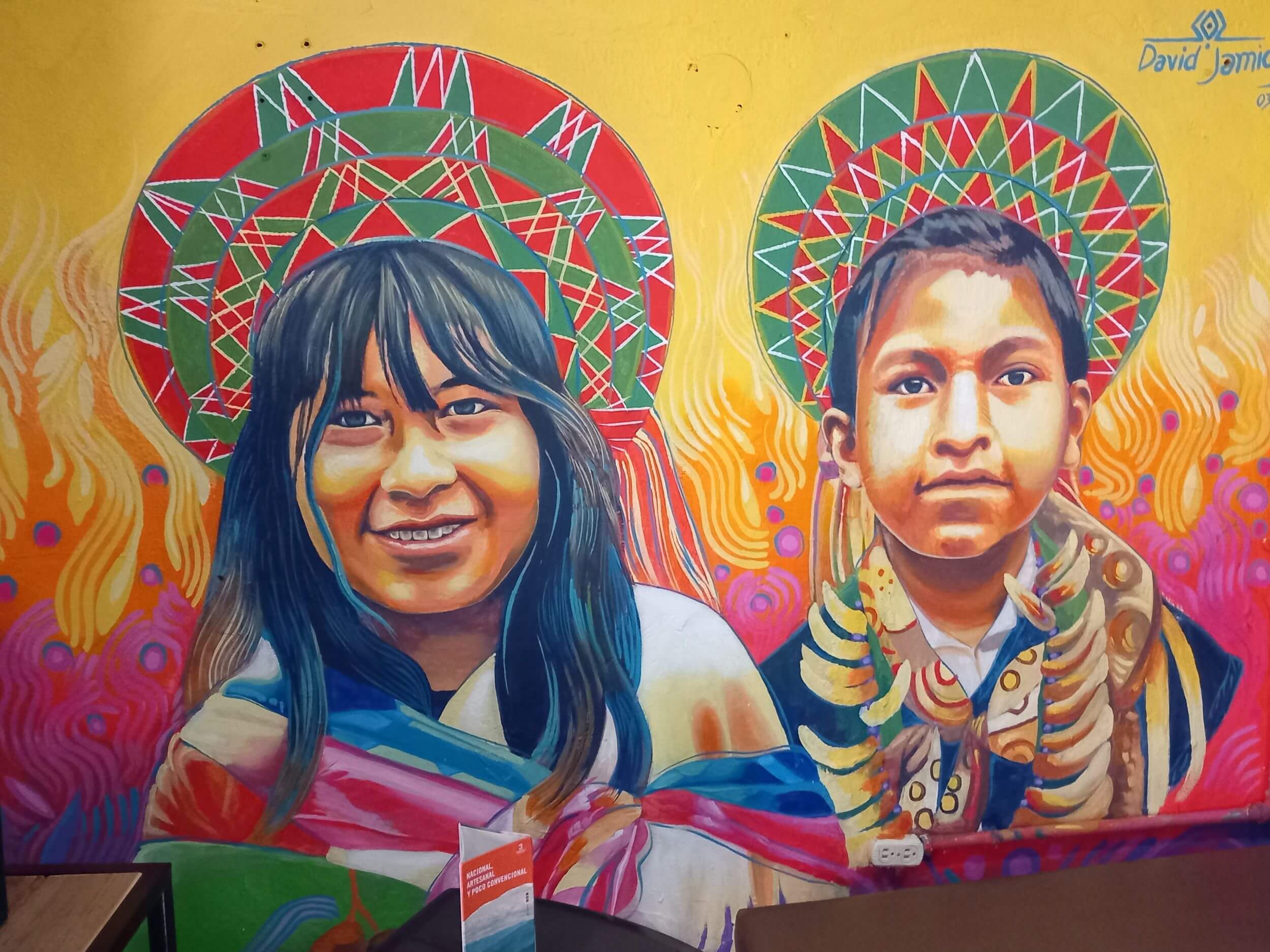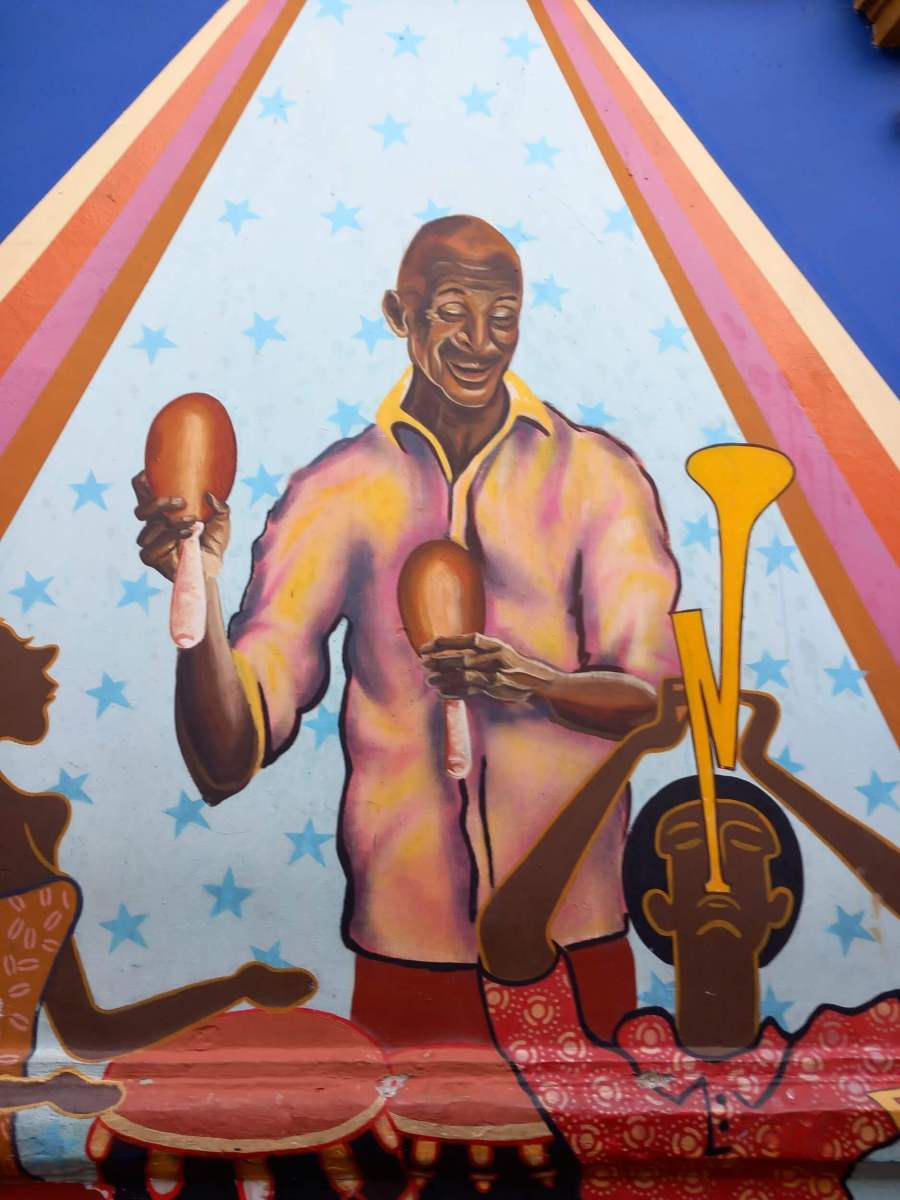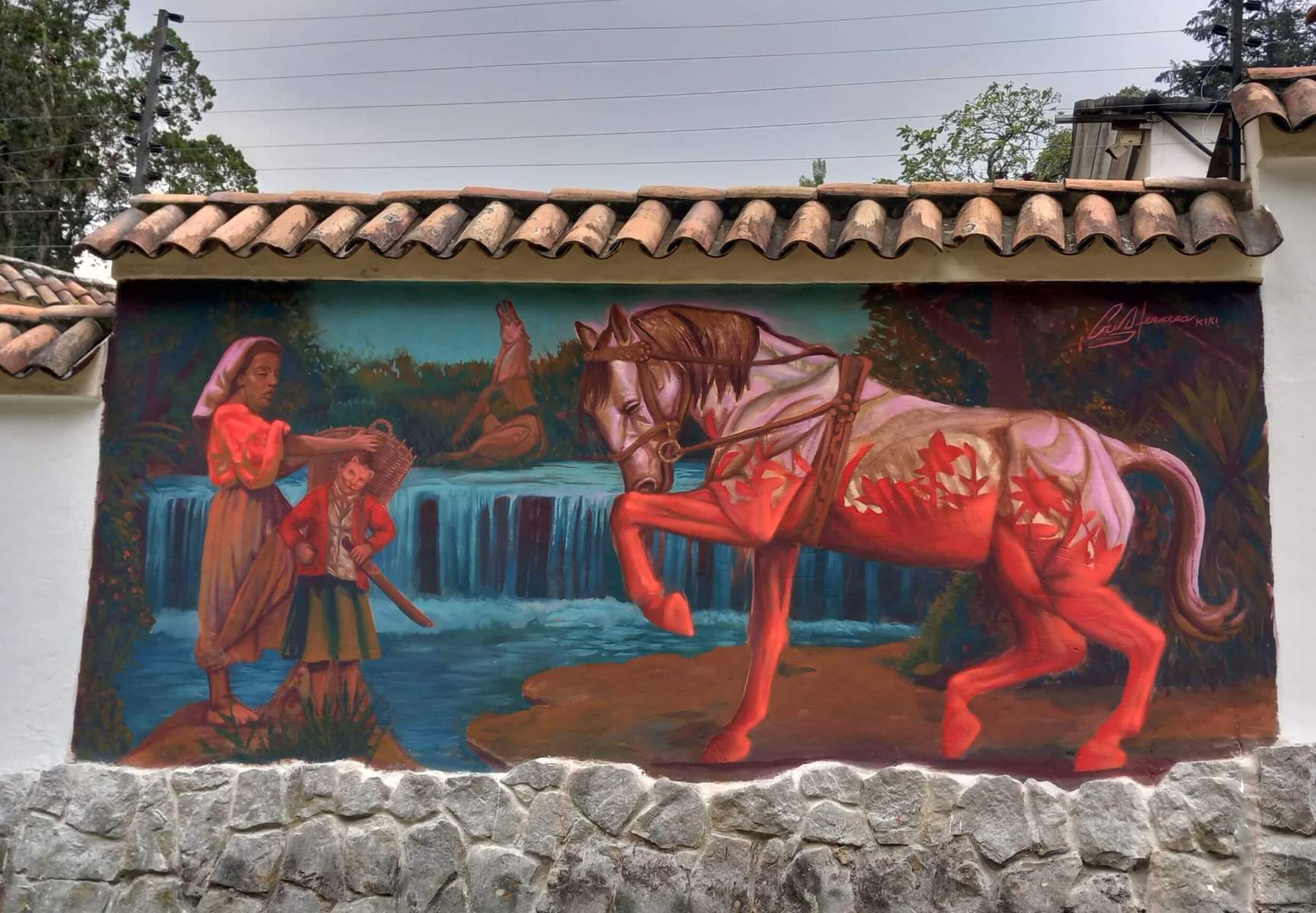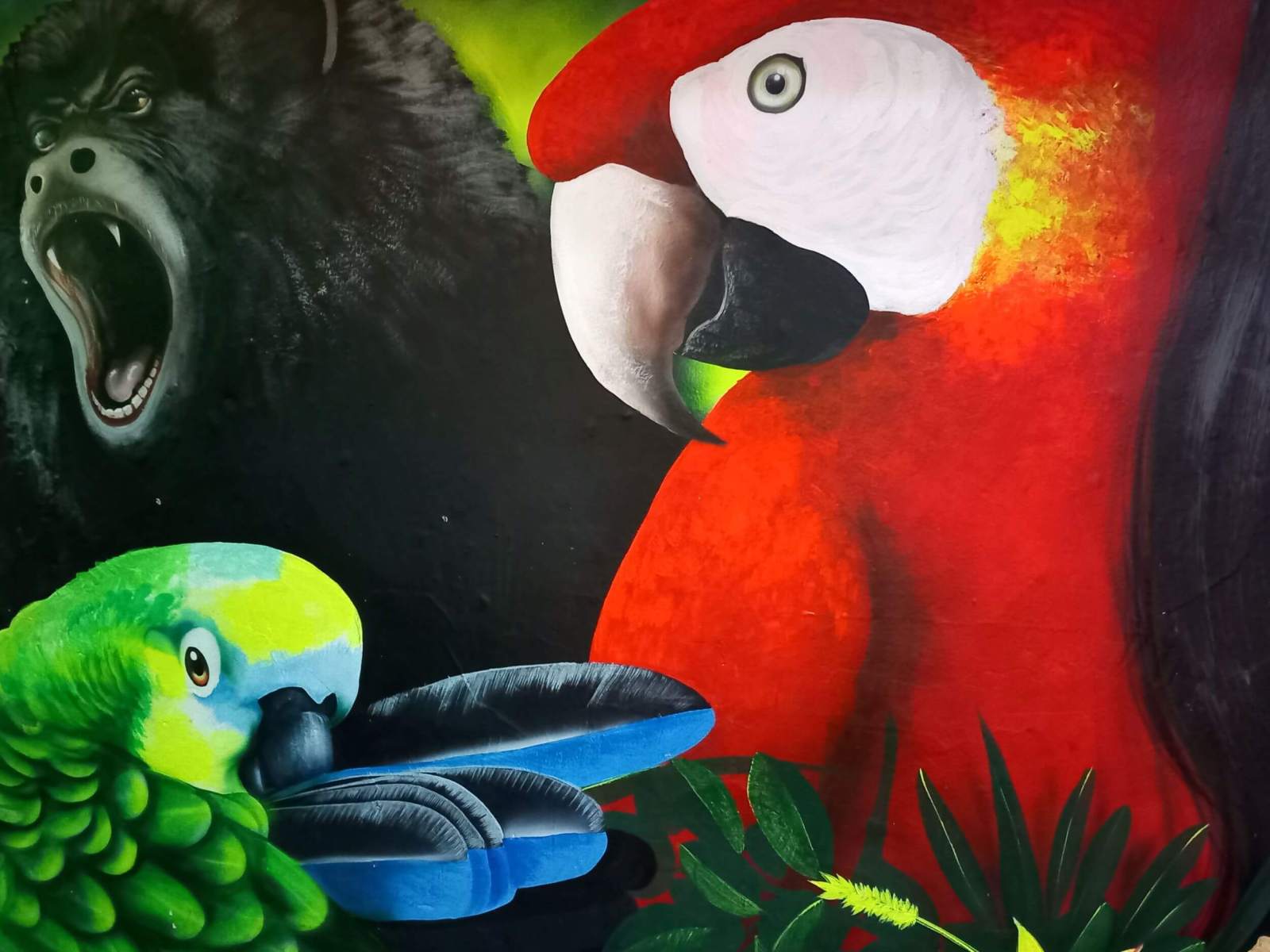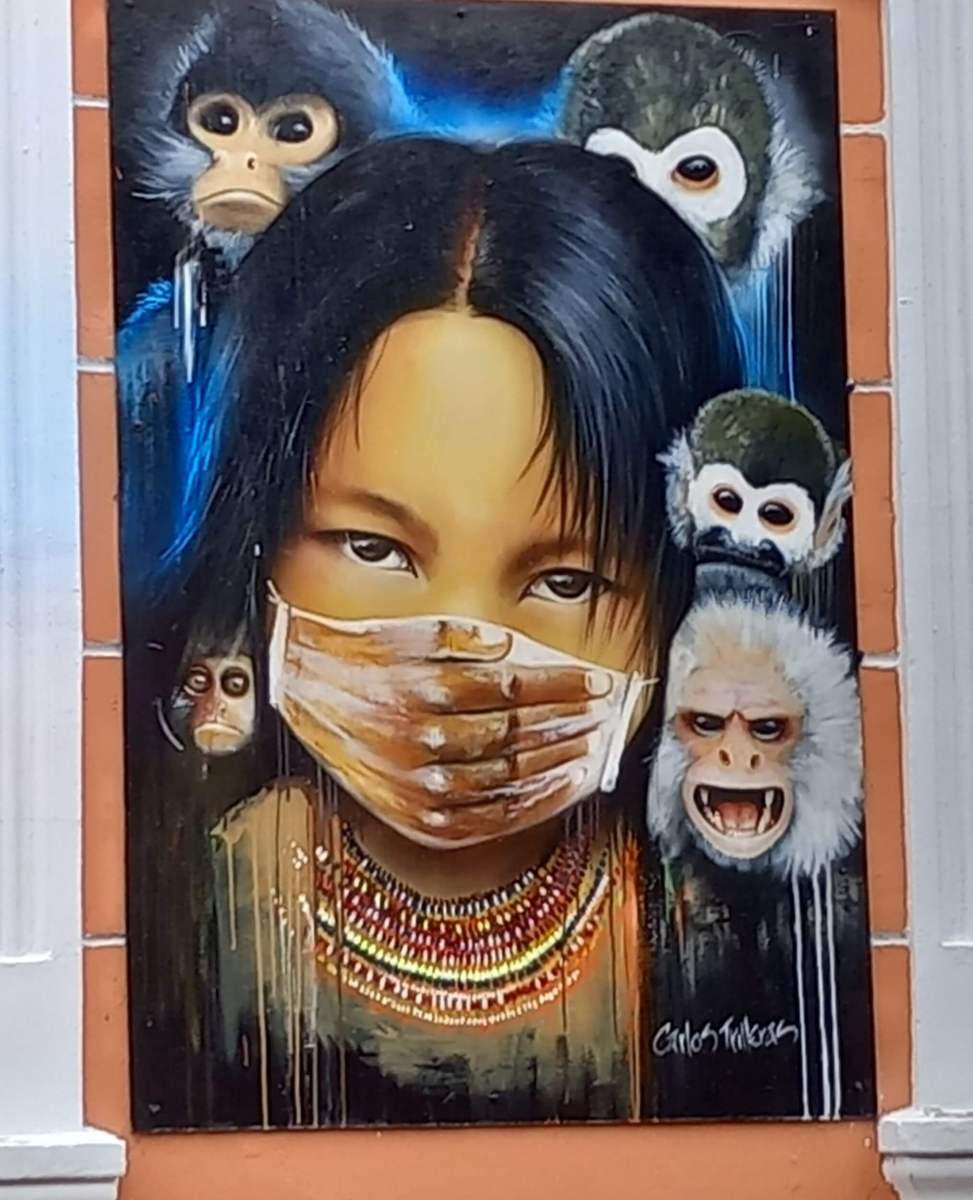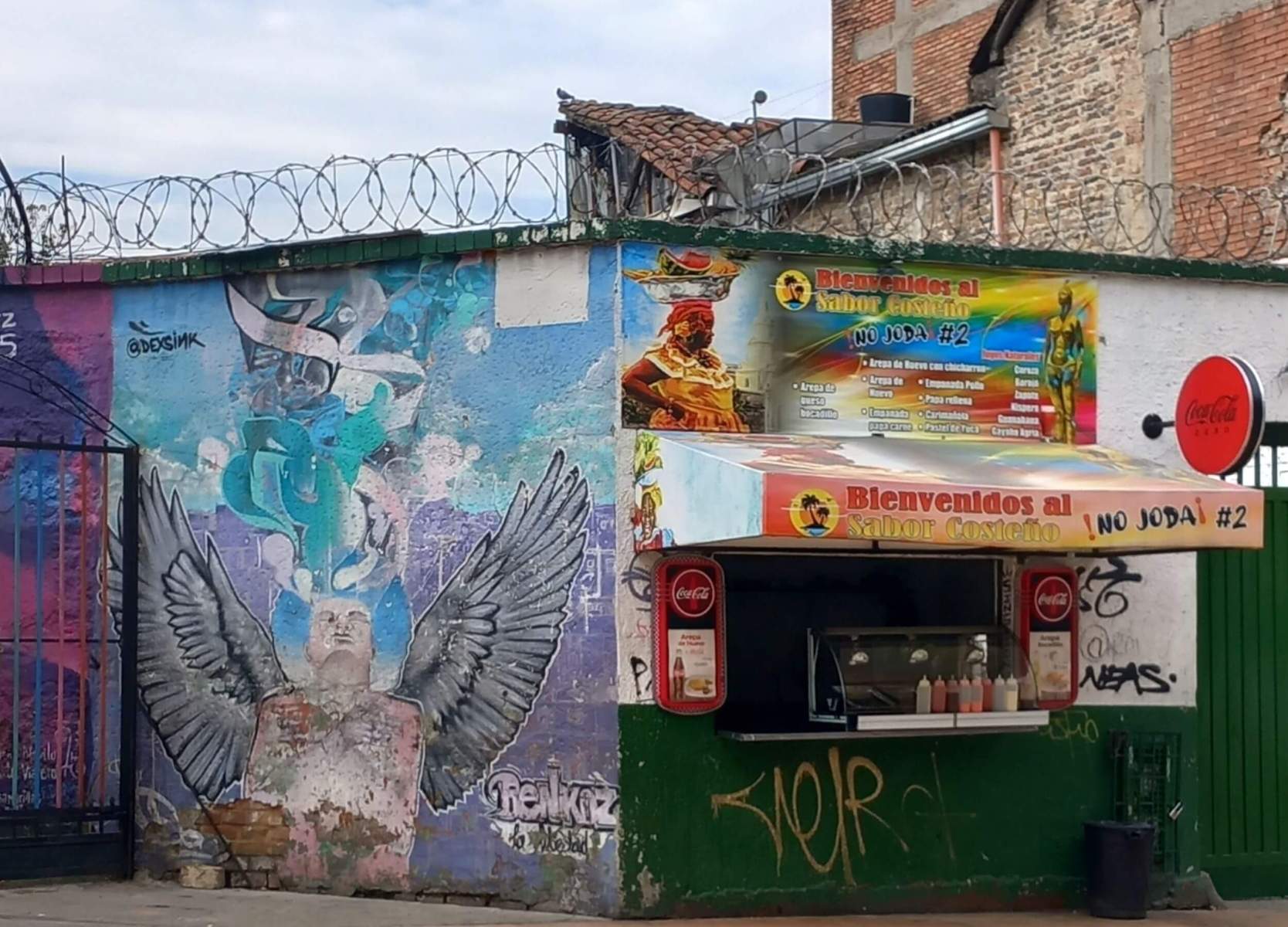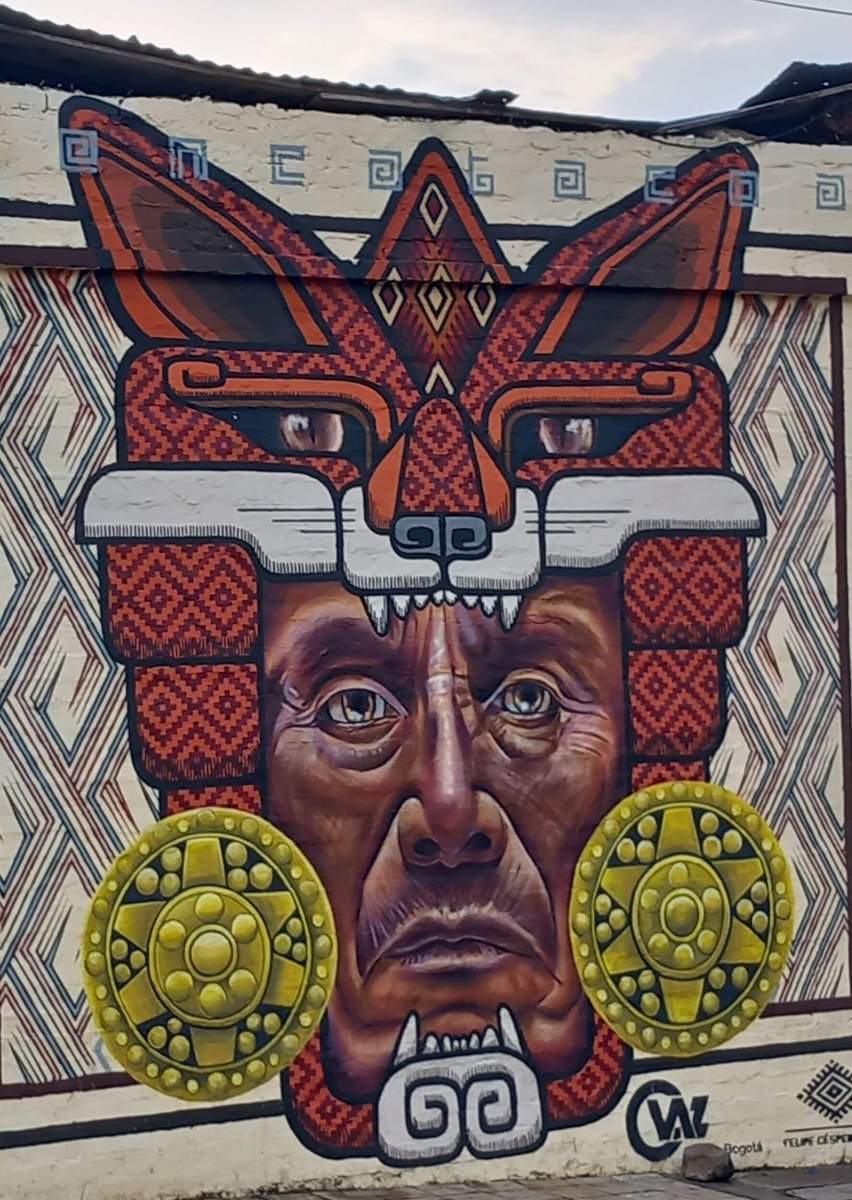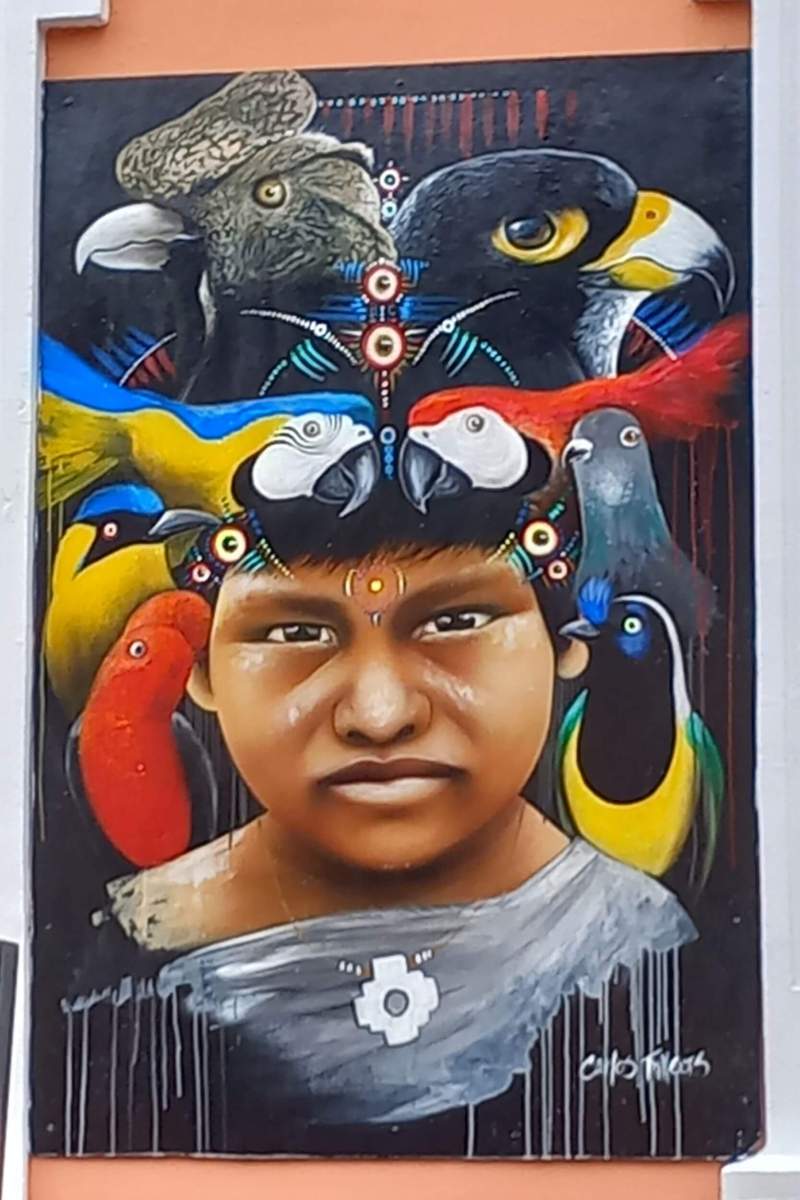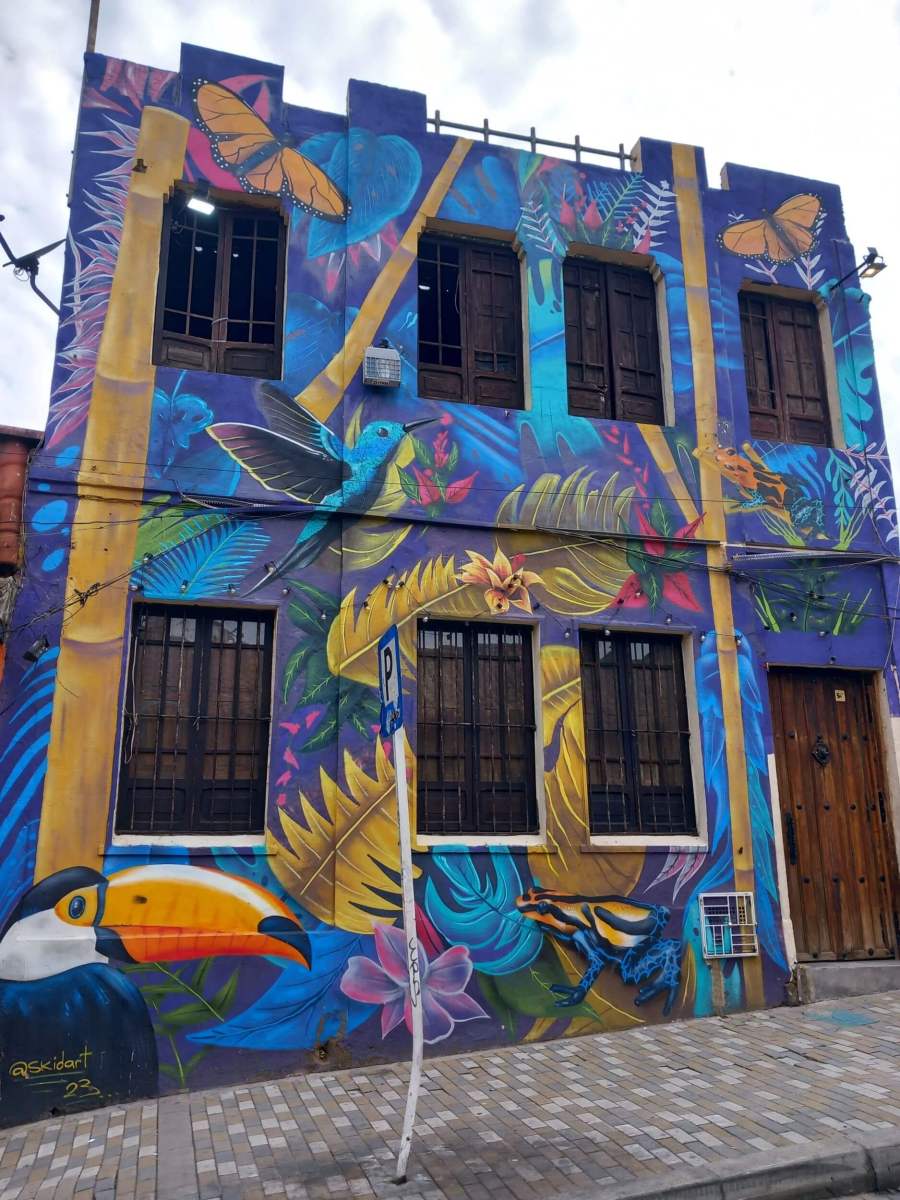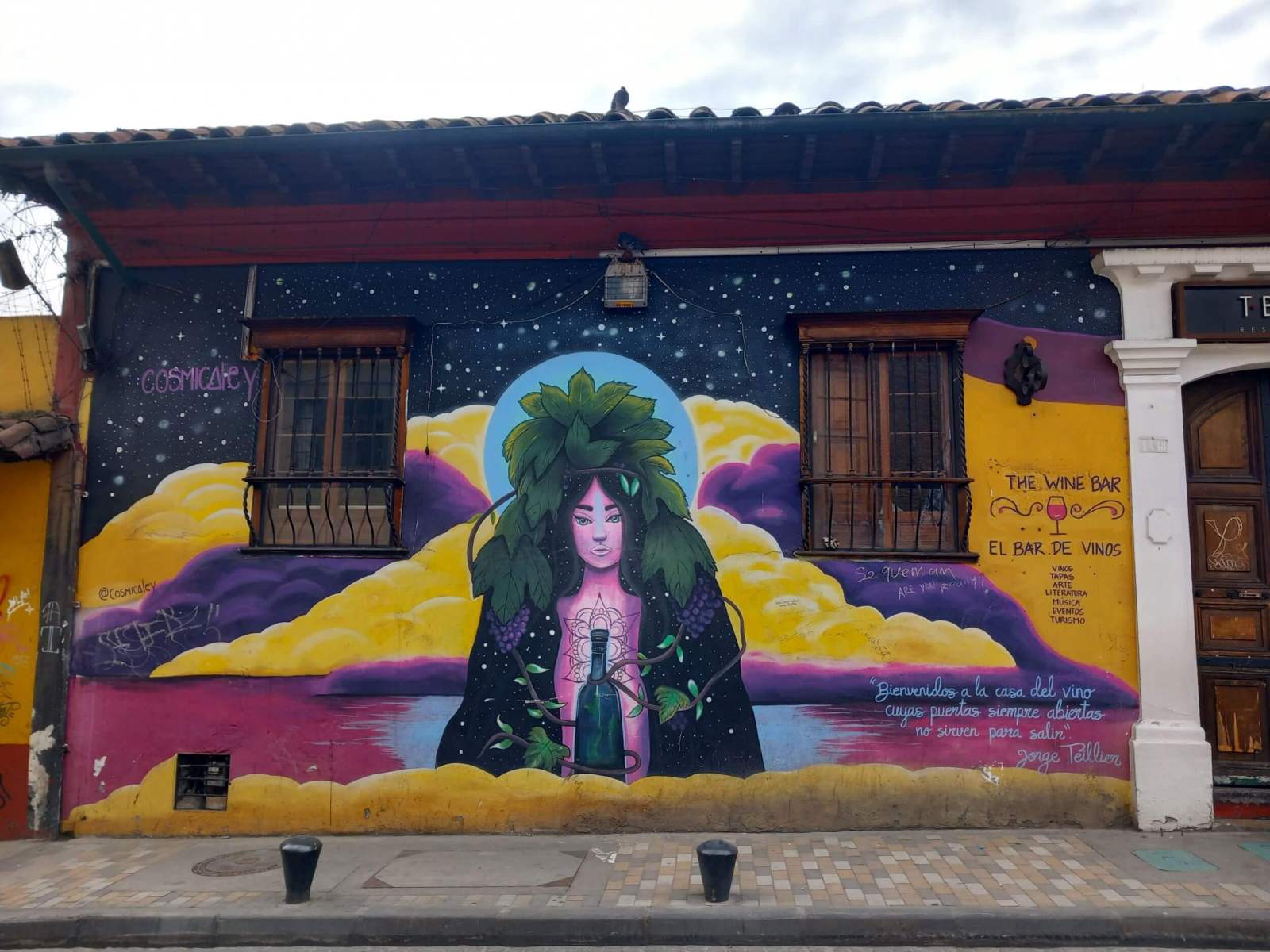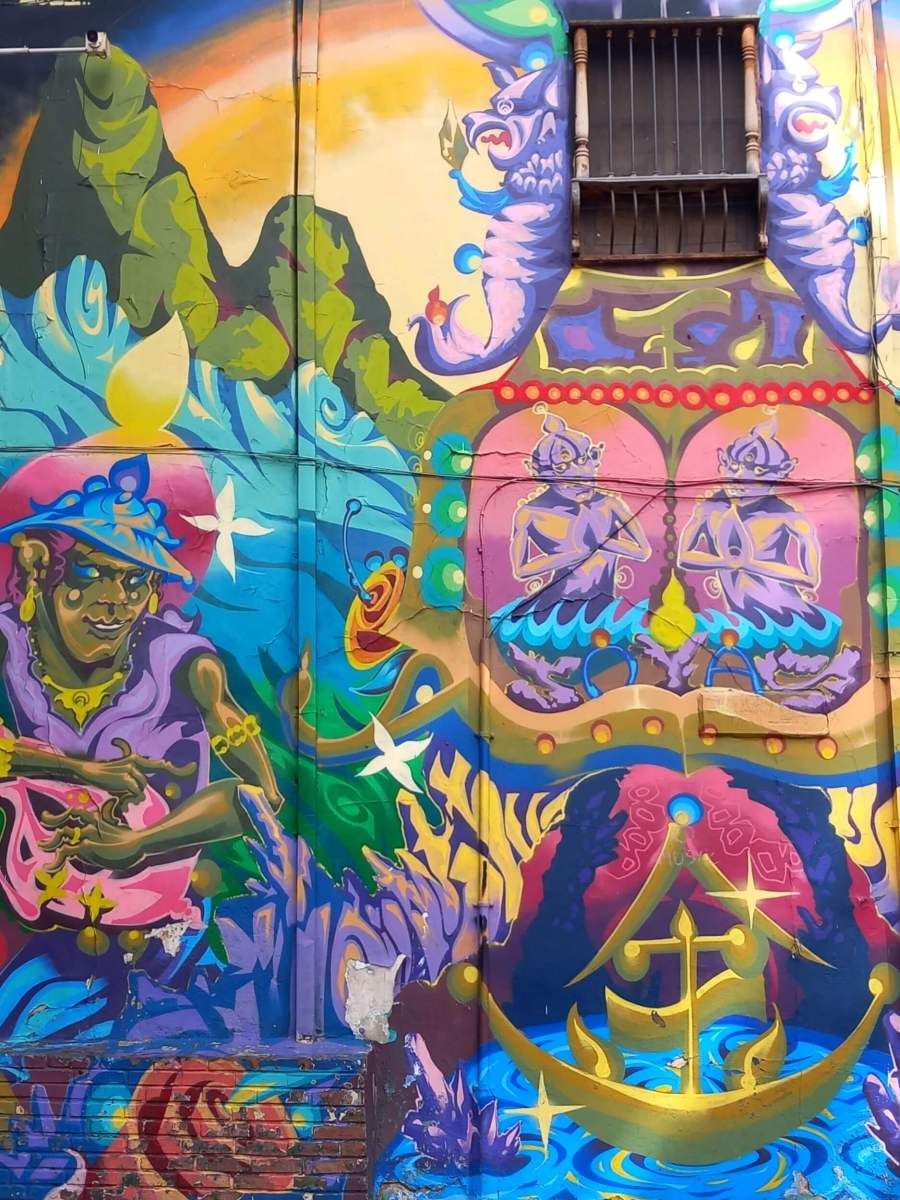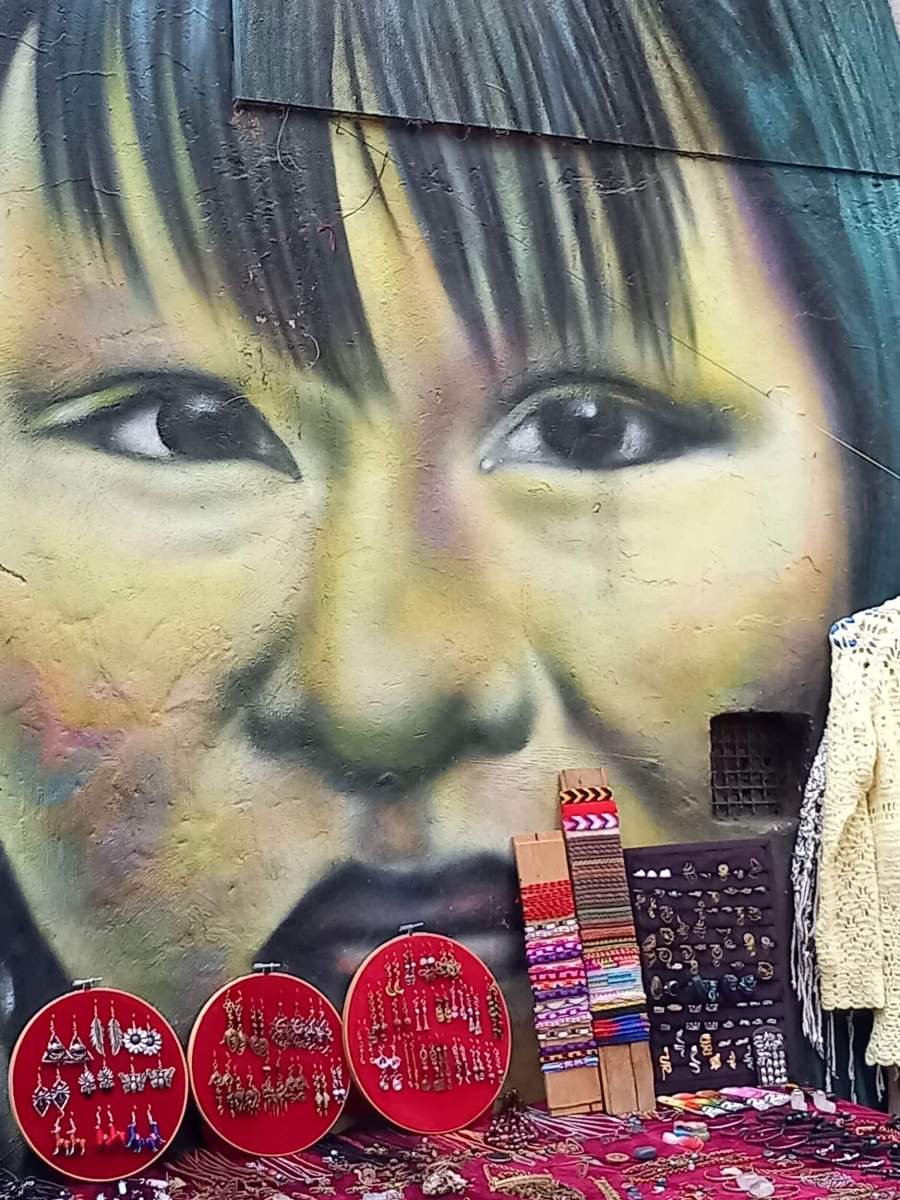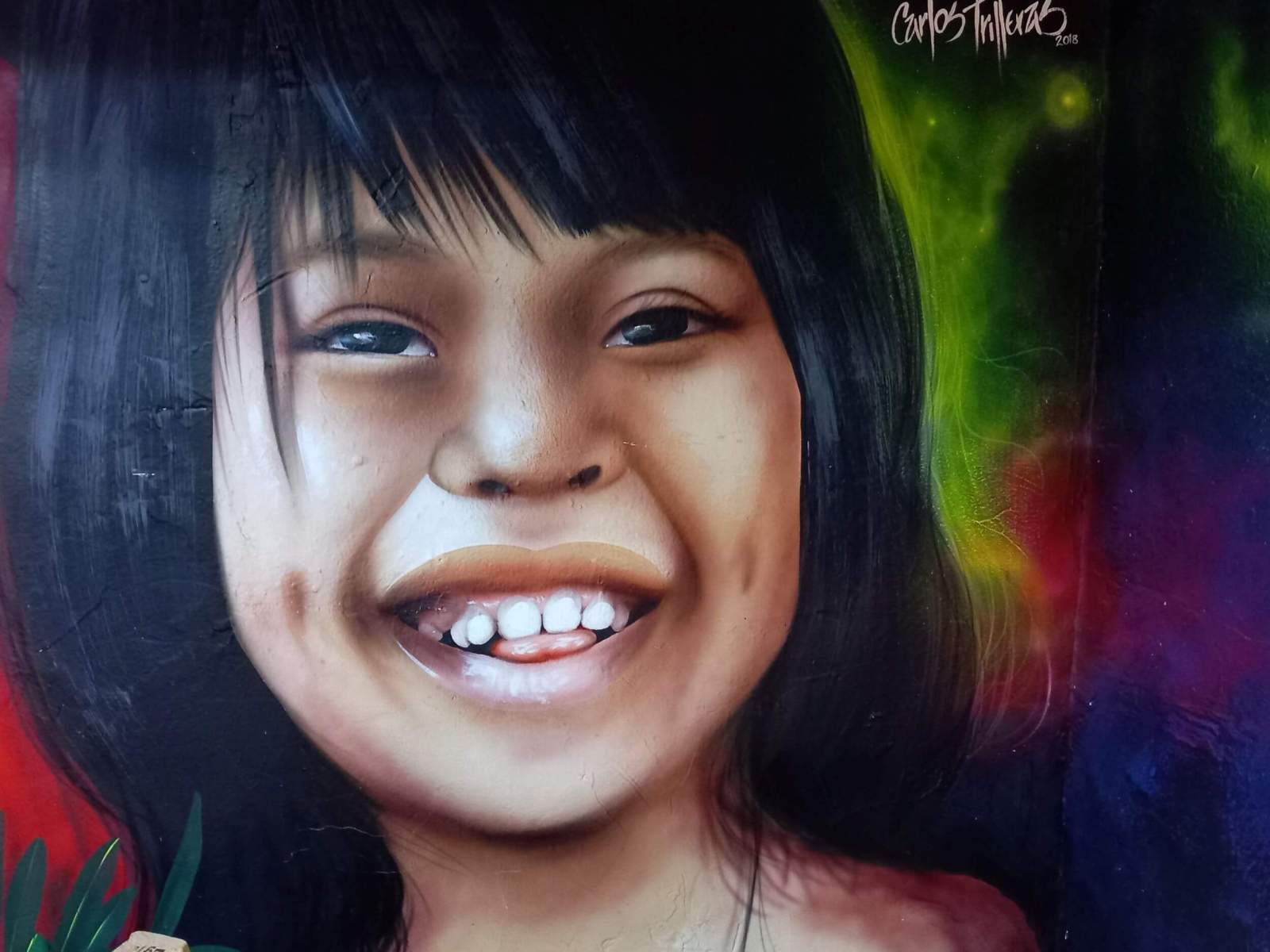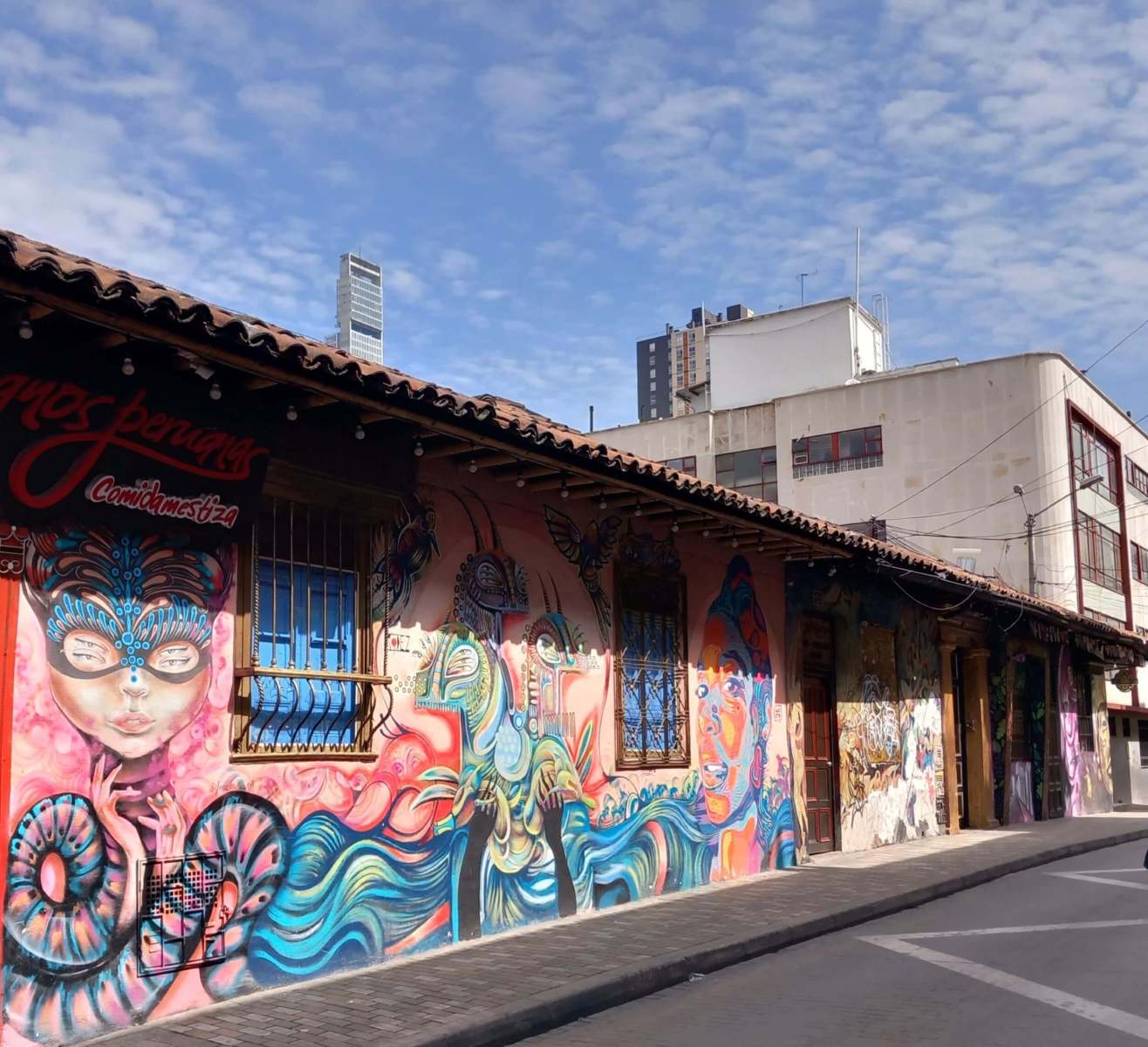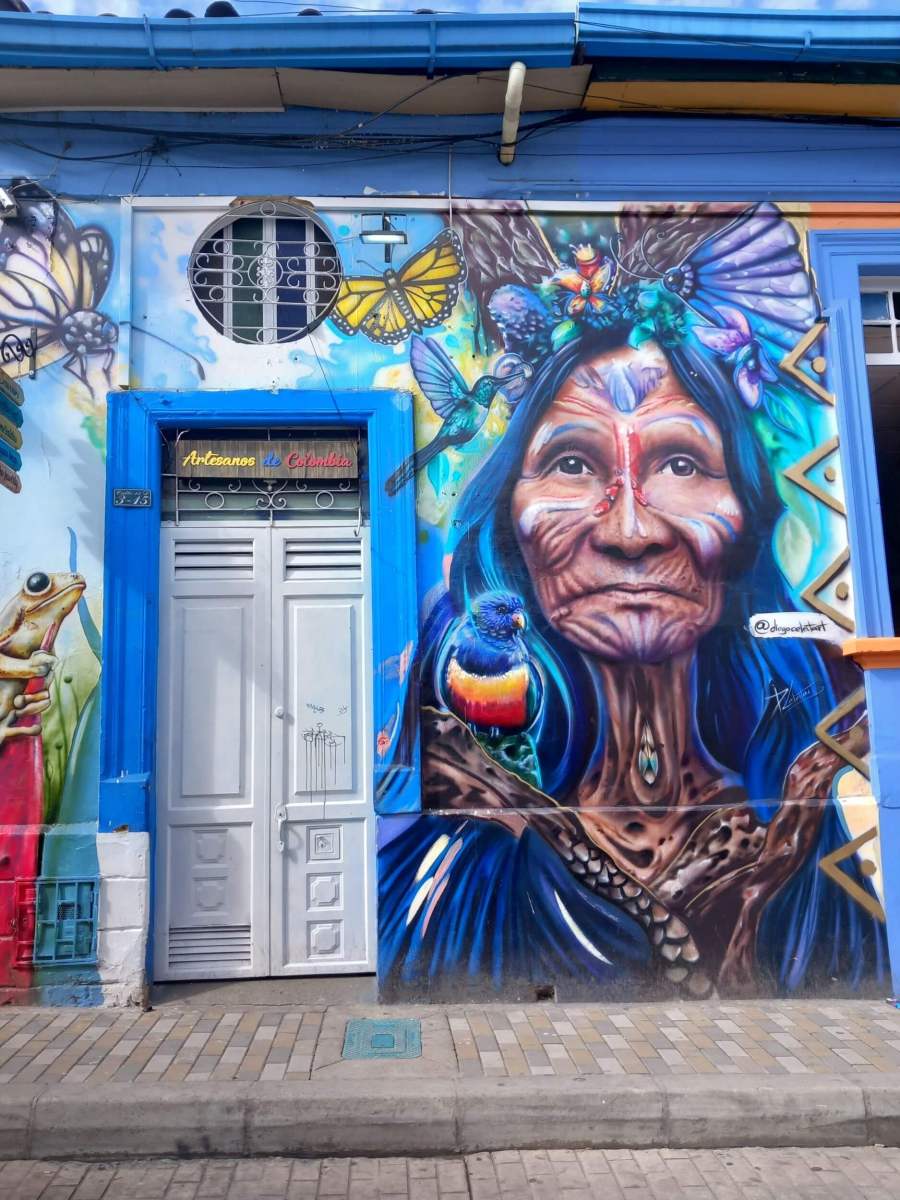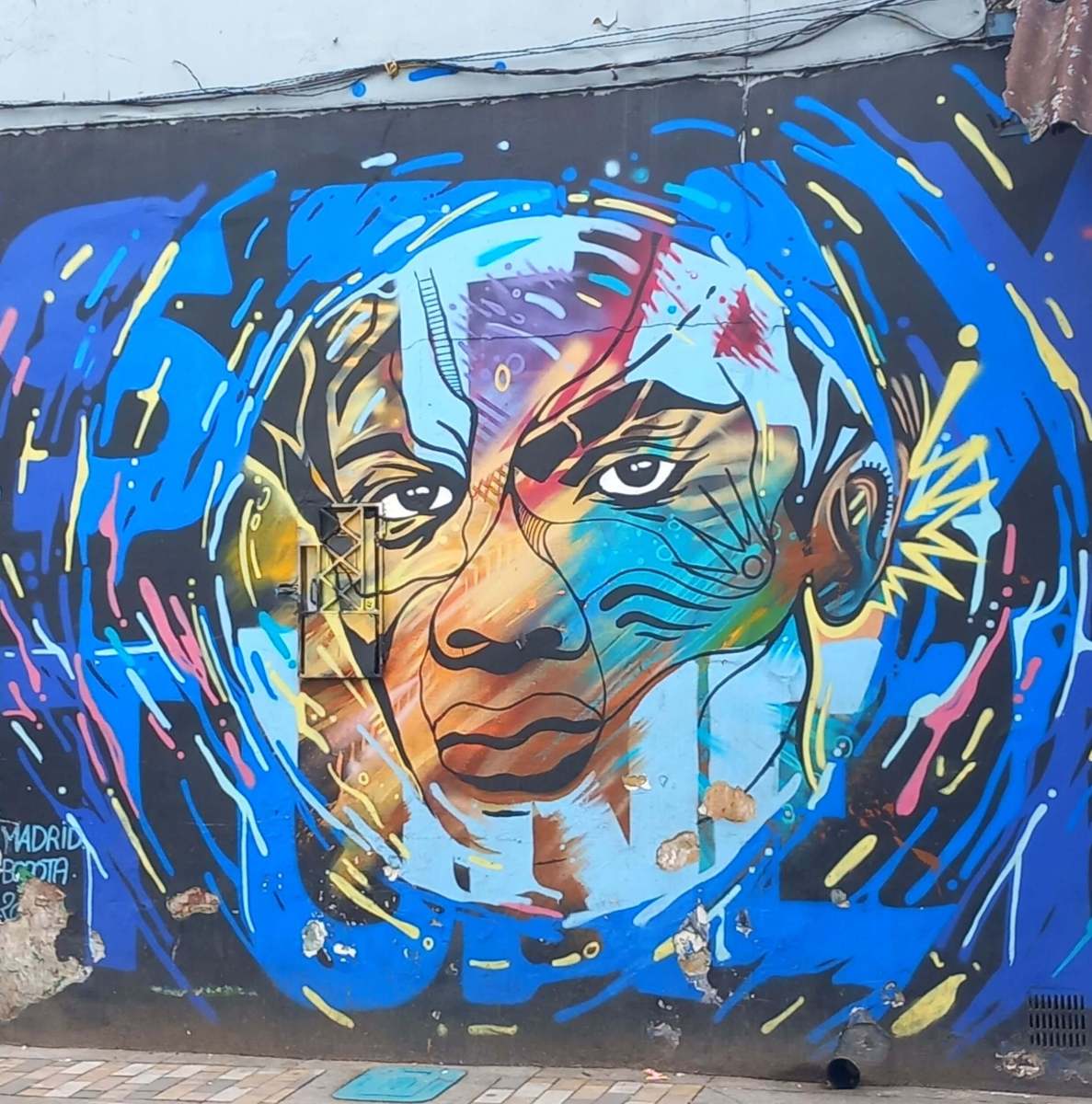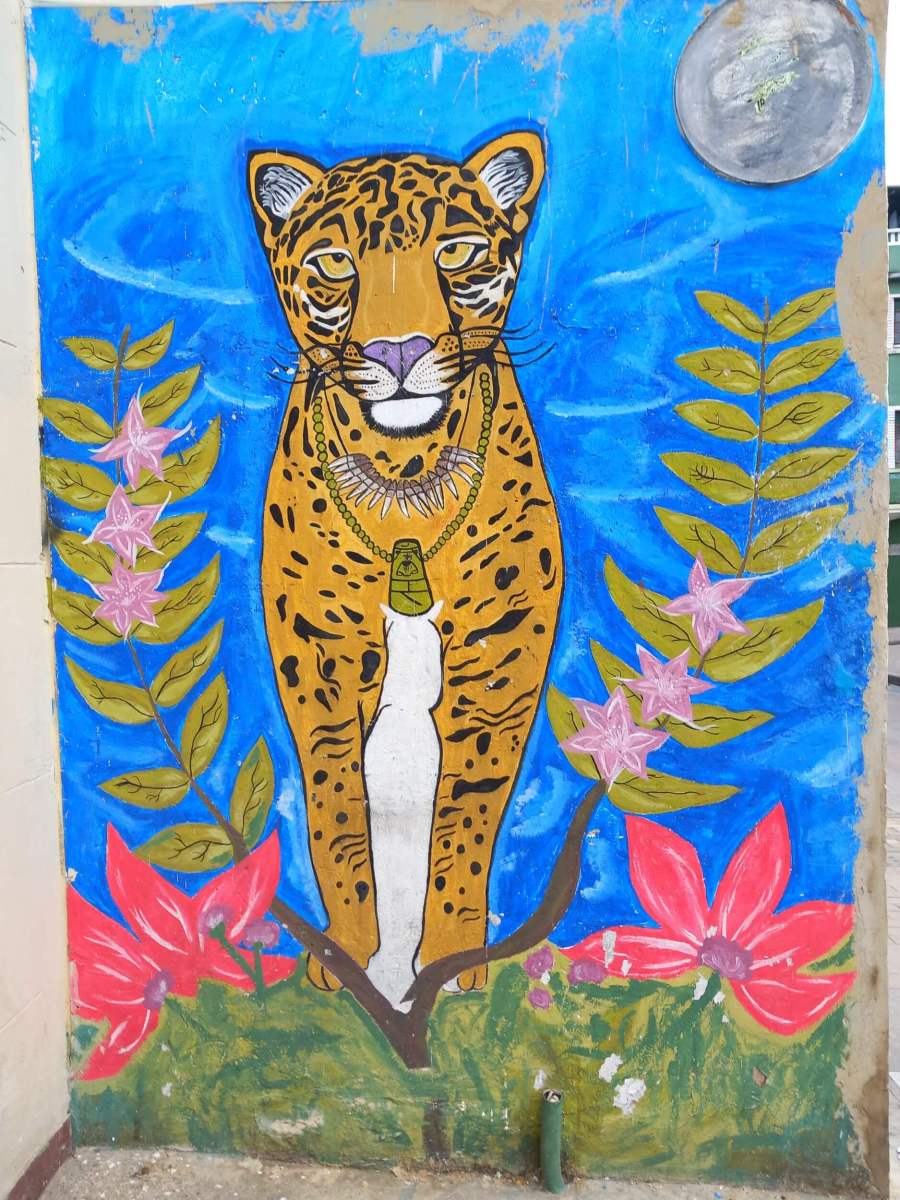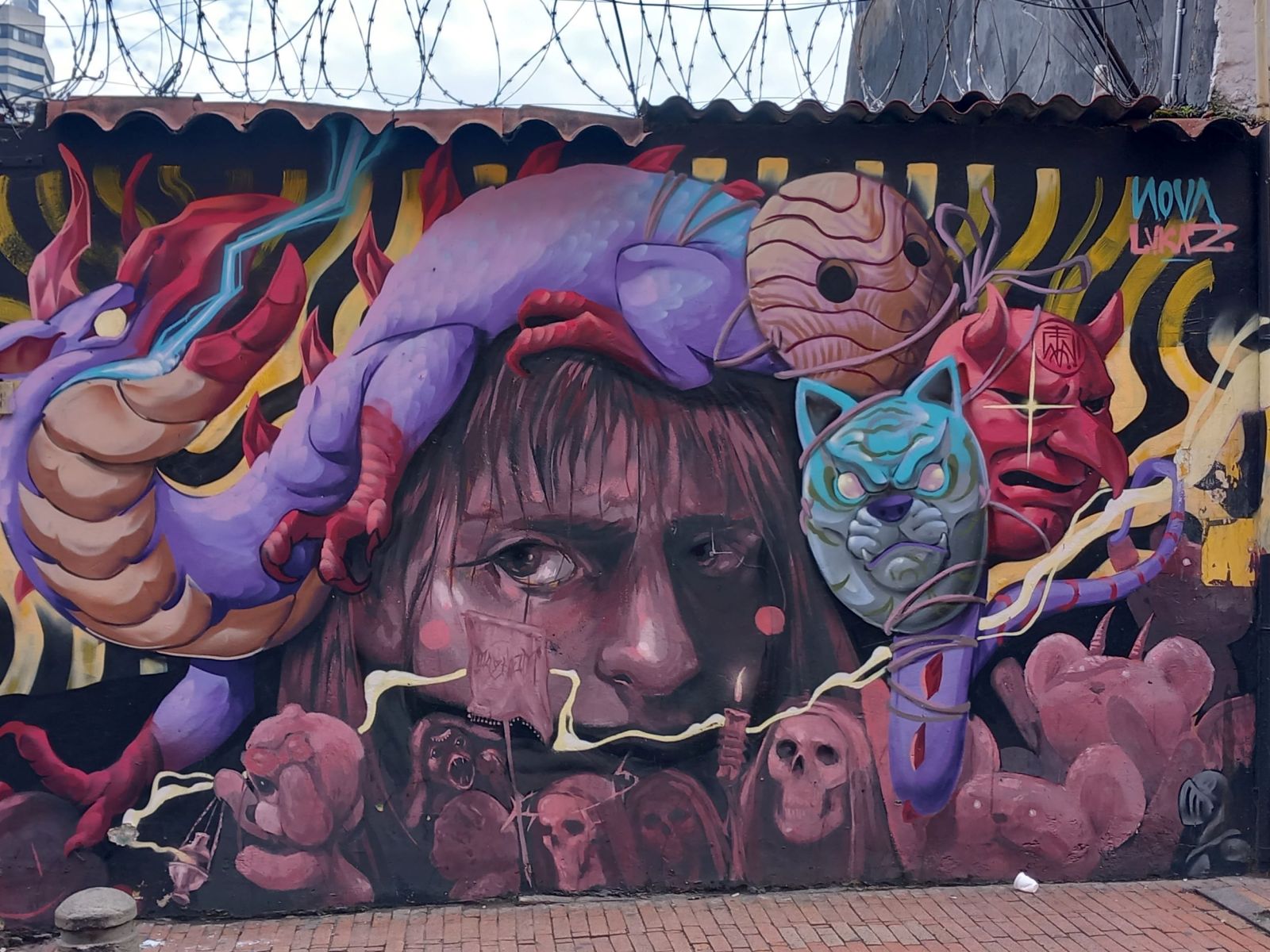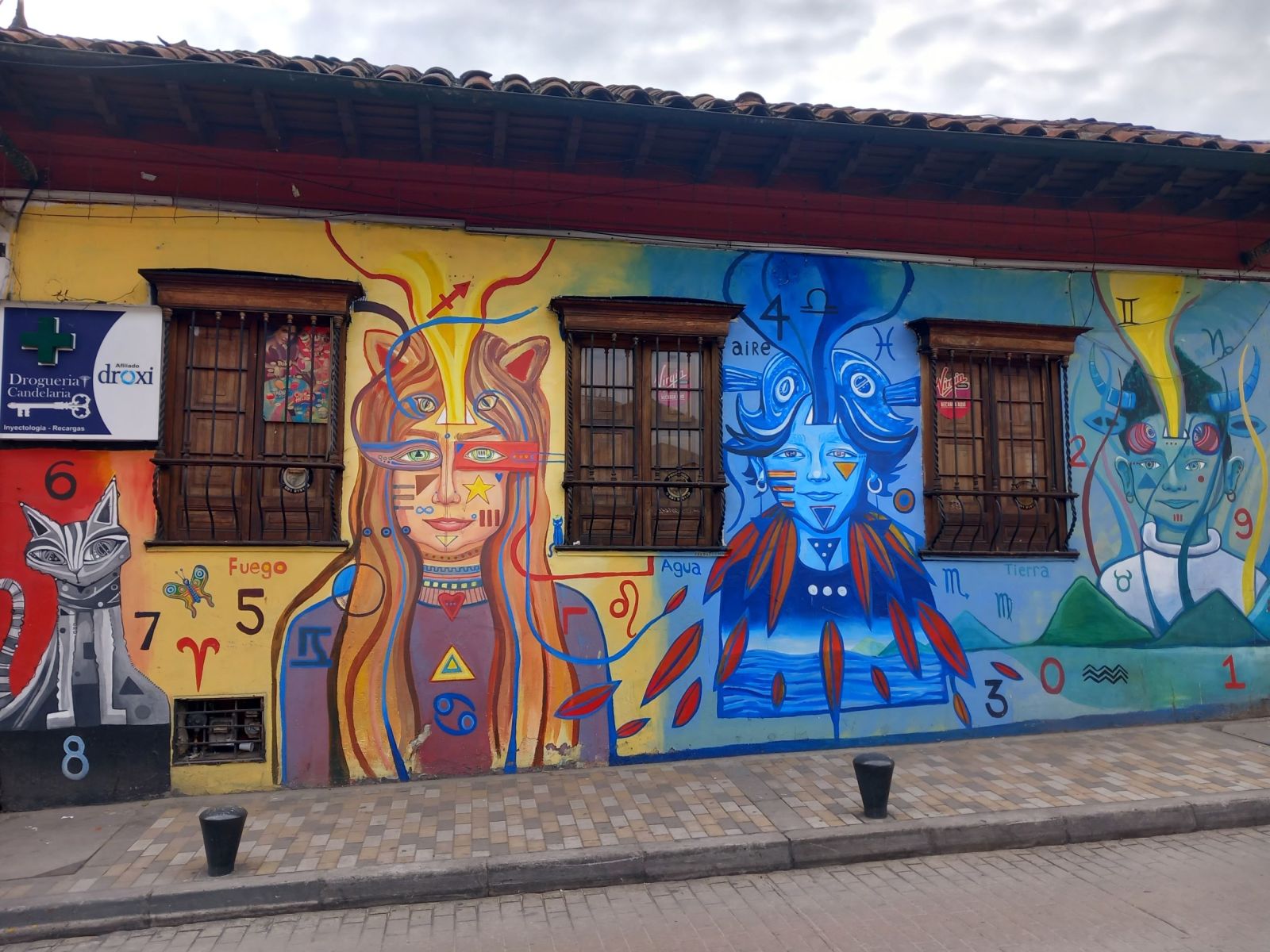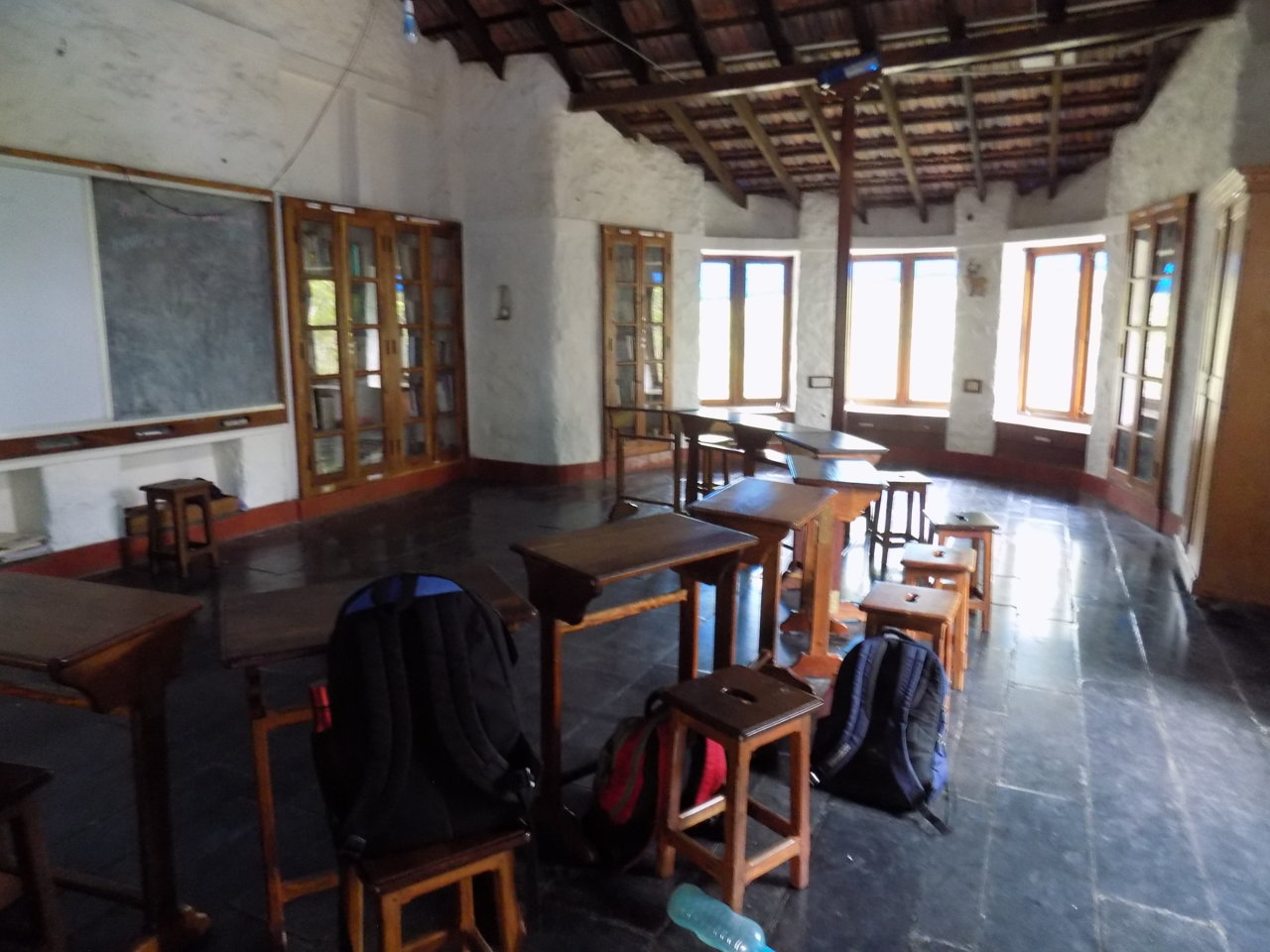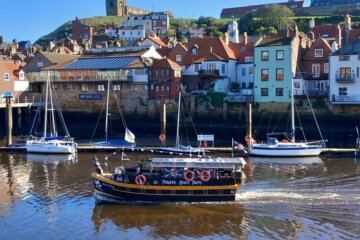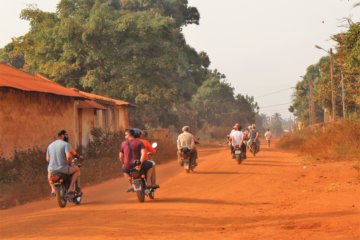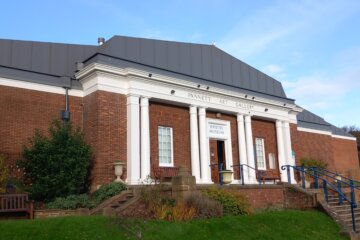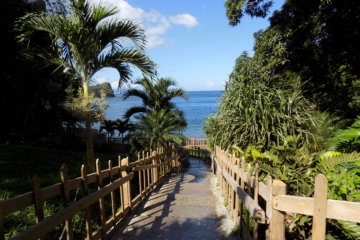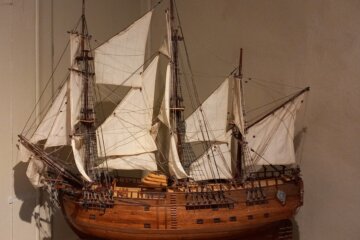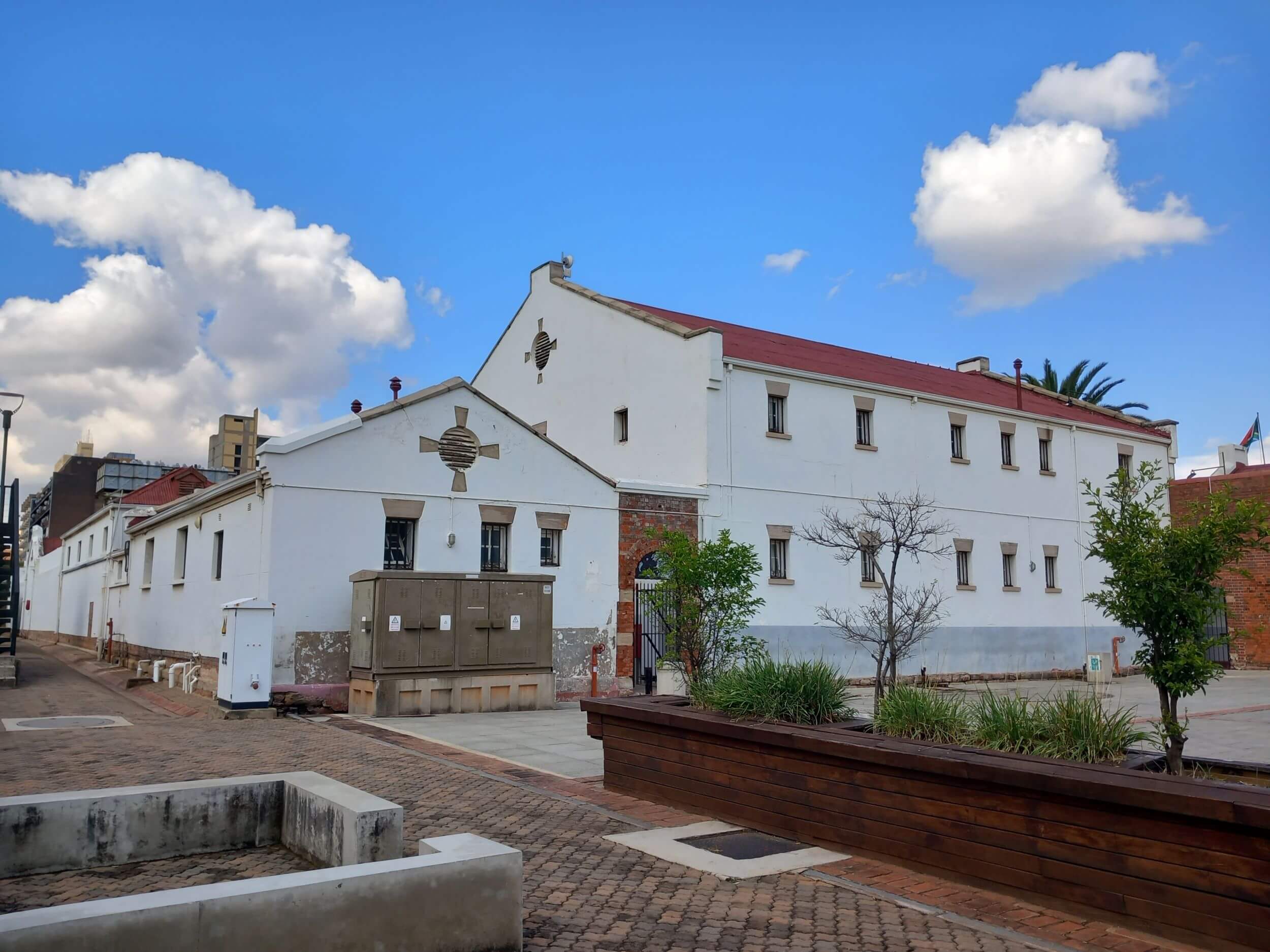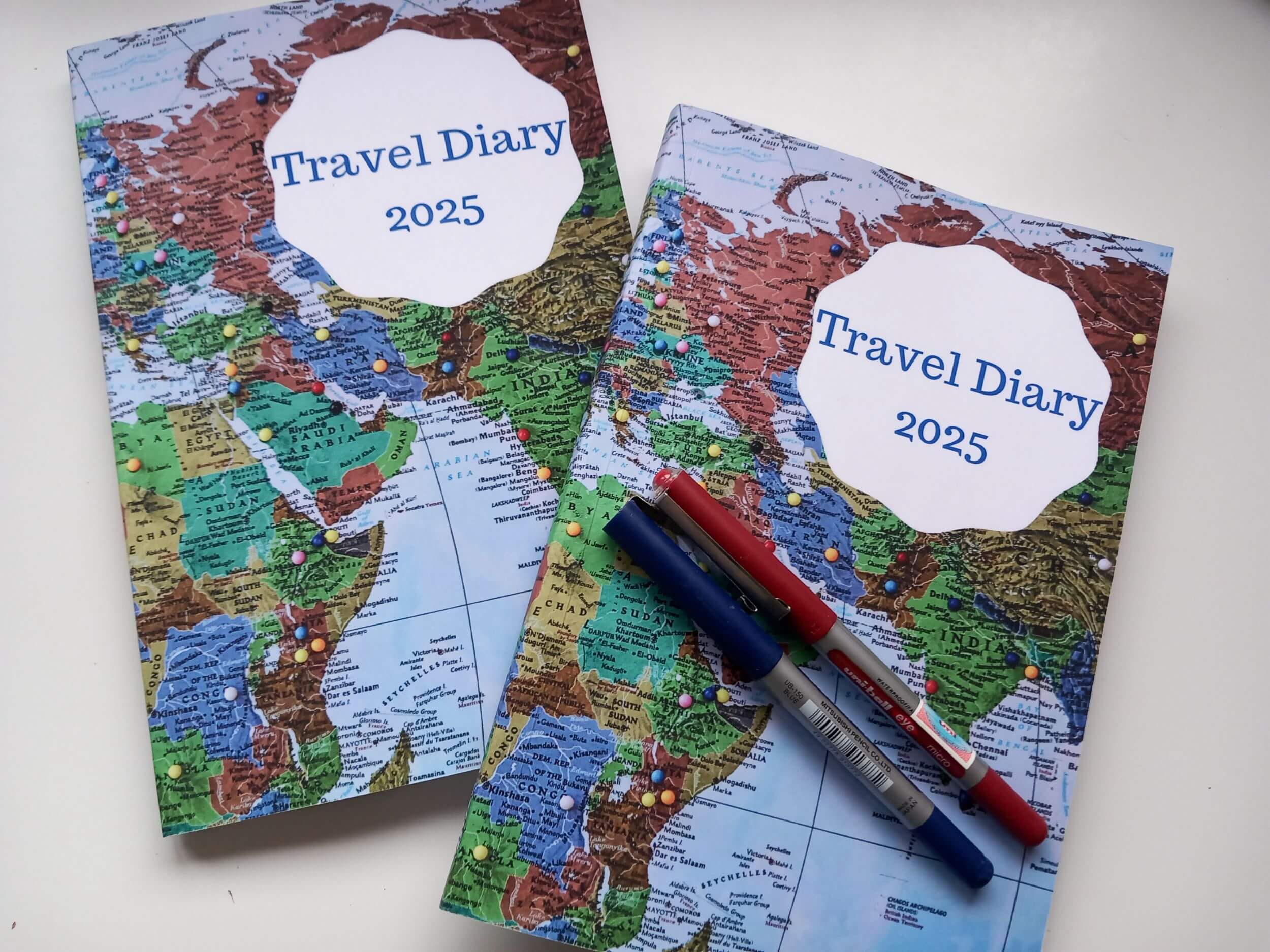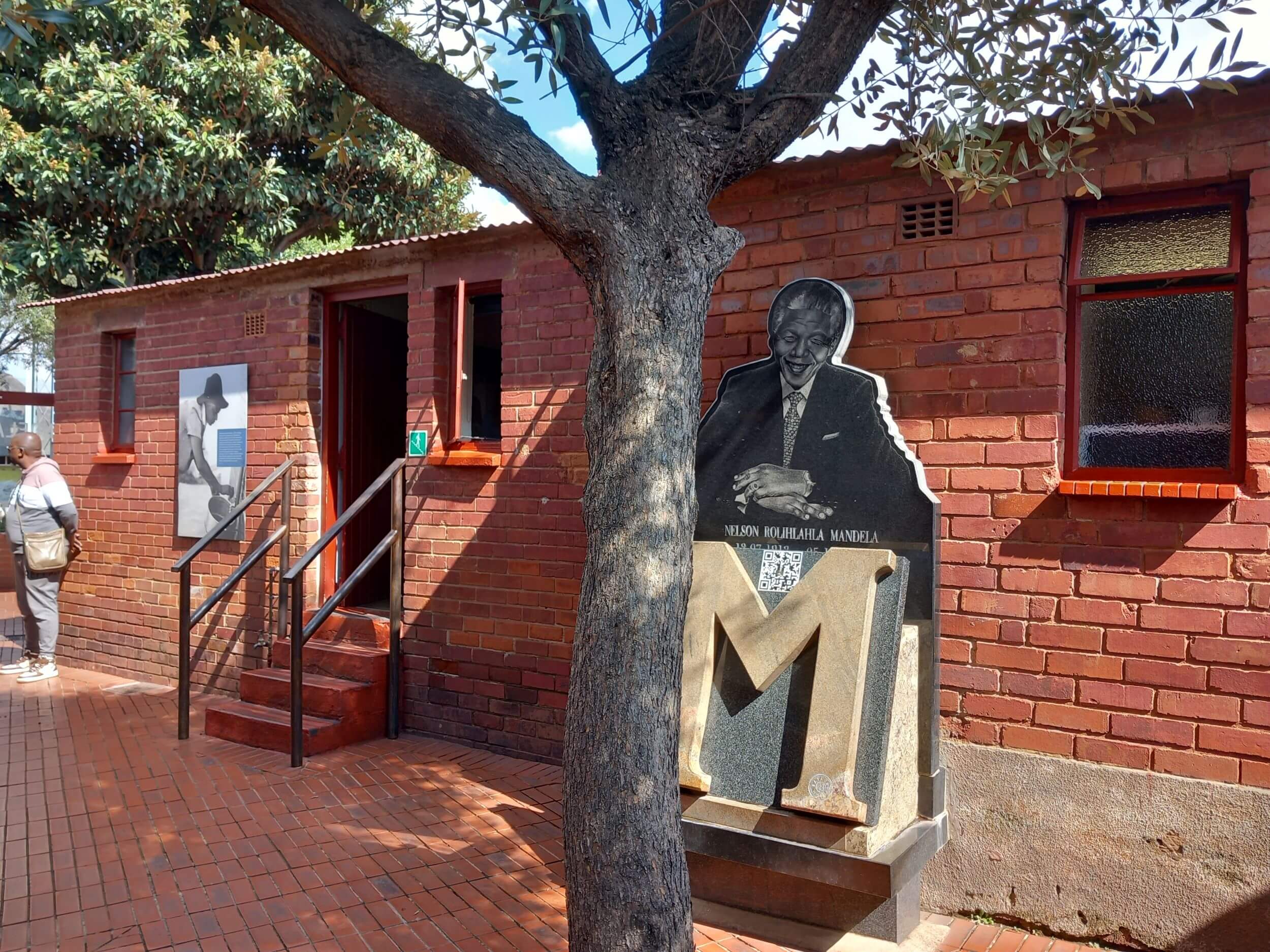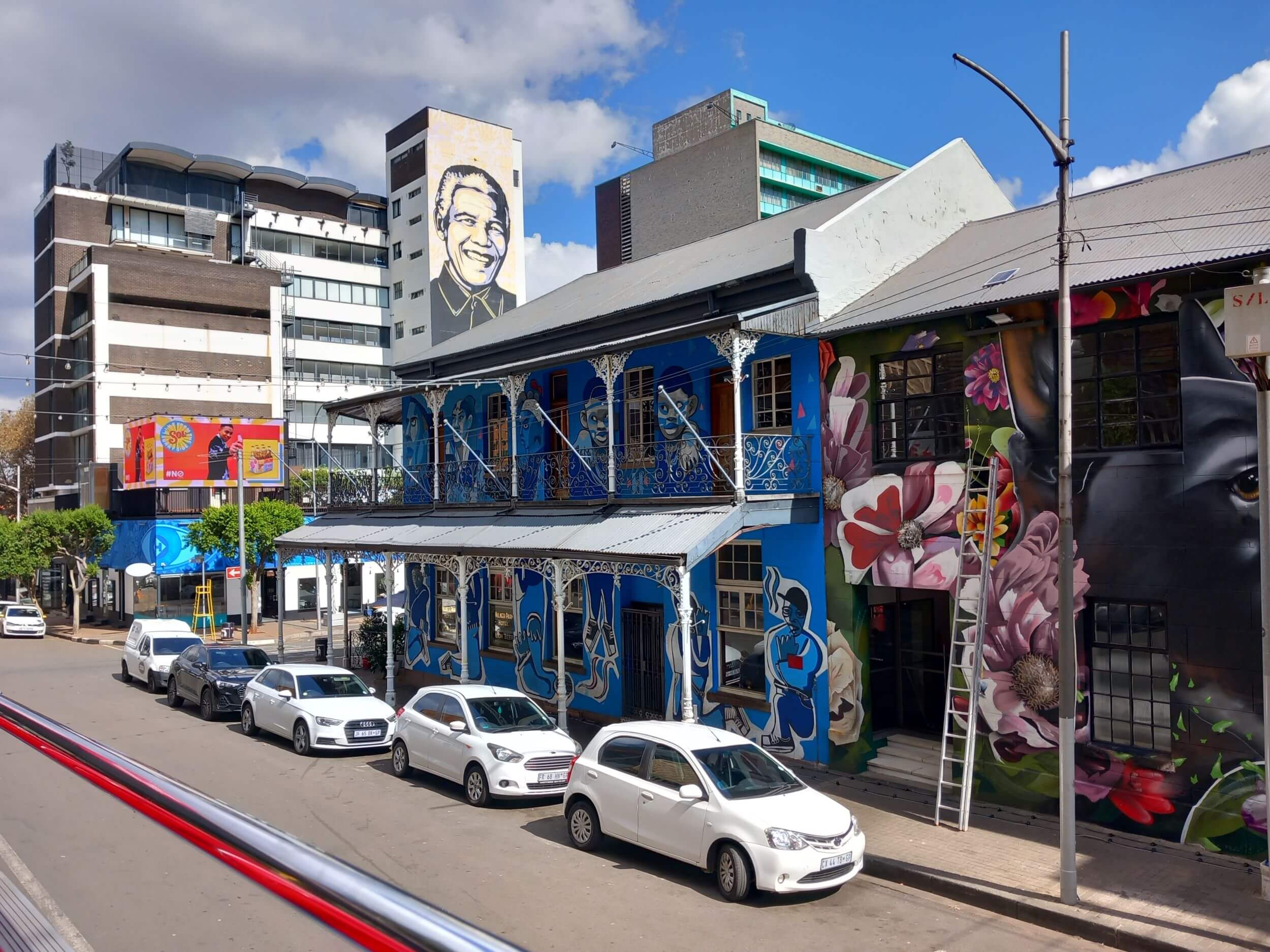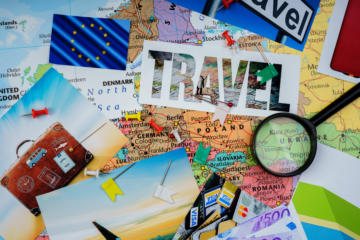Most visitors to Colombia bypass Bogotá completely, heading instead for the popular coastal town of Cartagena, or Medellin, with its perfect climate and opportunities for hiking, zip lining, and horseback riding. This, I feel, is a mistake! Read on for my guide to the best things to do in Bogotá.

In this article
First Thoughts
Nestled high in the Andes, the bustling capital of Colombia is a tapestry of history, culture, and modern flair, all wrapped up in a warm, mountain embrace. This is a city where cobblestone streets echo with tales of yesteryear, where every corner pulsates with an eclectic beat, and every meal promises a new adventure. Bogotá is not just a destination; it’s an experience that unfolds like a gripping novel you can’t put down. We recently spent four days in the city and were constantly surprised and delighted.

A Brief History of Bogotá
Founded in 1538 by Spanish conquistador Gonzalo Jiménez de Quesada, Bogotá rose from indigenous roots to become the heart of Colombia. The city grew from a small settlement into the administrative hub of the New Kingdom of Granada, as the Spanish overhauled indigenous structures and imposed their own architectural and cultural influences. The legacy of this era is vividly captured in the historic centre of La Candelaria, where colonial buildings stand as enduring testaments to this transformative period.
As the 19th century dawned, whispers of independence began to echo through Bogotá’s cobblestone streets. The city became a crucible for revolutionary thought, with figures like Simón Bolívar and Francisco de Paula Santander playing pivotal roles. In 1819, following the decisive Battle of Boyacá, Colombia emerged as a sovereign nation, with Bogotá at its heart. The Plaza de Bolívar, named in honour of the liberator, remains a symbolic reminder of these turbulent yet triumphant times.
The 20th century saw Bogotá undergo rapid urban expansion, driven by industrialisation and migration. The cityscape transformed as skyscrapers rose alongside traditional buildings, reflecting a burgeoning economy. However, this growth was not without its challenges. The infamous ‘Bogotazo’ of 1948, a massive riot sparked by the assassination of popular leader Jorge Eliécer Gaitán, plunged the city into chaos and marked the onset of a period of violence known as ‘La Violencia’.
Despite these trials, Bogotá emerged resilient. The latter half of the 20th century was characterized by ambitious infrastructure projects and cultural renaissance. Establishing institutions like the Gold Museum and the National Museum of Colombia showcased the city’s commitment to preserving its rich heritage while embracing modernity.
Today, Colombia’s capital city is a vibrant metropolis, a melting pot of cultures and ideas. Contemporary transformations have seen it become a hub for technology and innovation while continuing to honour its diverse roots. Influential figures, such as author Gabriel García Márquez, have left indelible marks, shaping Bogotá’s cultural identity and global perception.
Interesting Things to Know About Bogotá
- Bogotá is the third highest capital in South America (behind Quito and La Paz) at 2640 metres above sea level. It is worth taking a day to acclimatise at the beginning of your trip as the high altitude can adversely affect some visitors. I was fine, but Mark suffered with headaches during our first 24 hours in the city.
- It is relatively cool all year round, with a high of 18 to 20℃ during the day and a low of 6 to 9℃ at night. It can rain a lot!
- Bogotá is known as the ‘Athens of South America’ due to its abundance of universities and libraries (the city is home to more than 100 higher education institutions) that has drawn comparisons to the flourishing education system of ancient Greece.
- The city’s name comes from the indigenous word Bacatá which means ‘enclosure outside the farm fields’, a term which was used for a Muisca and Chibcha indigenous settlement that was located on the western side of the Funza River (Bogotá River) at the time of the Conquest. Over time, it was adopted as the official name of the capital.
- Bogotá was named a UNESCO City of Music in 2012 thanks to its 60 annual music festivals and 500-plus live music venues.
- Bogotá is quickly becoming the biking capital of the world. It is more than just bike-friendly, it’s bike-forward. More than half of all households own at least one bicycle, and cyclists enjoy more than 220 miles of cycling paths within the city limits – the largest network in Latin America. Some 75 miles of city roads shut down each Sunday for the cyclovia when two million Bogotanos hit the street on foot, bike, or rollerblade.
- The city’s streets are numbered rather than named. Carreras run north-south and calles run east-west.
- The most popular sport in Bogotá involves beer and explosives. Gunpowder, beer, and throwing heavy objects – what could possibly go wrong? During a game of tejo, players toss steel discs at a clay-covered board. If they hit a target in the centre of the board, they score six points. If they hit a mecha (a pouch filled with gunpowder), they create a loud bang and score three points. If they do both with the same throw, they get nine points!
The Best Things to do in Bogotá
Explore the Plaza de Bolívar
The rich history of Bolívar Square dates back to the pre-Columbian era when the site was part of the Muisca Confederation. During the Spanish colonial period, Bolívar Square was the stage for circus acts, public markets, and bullfights.
Today, the iconic Plaza de Bolívar is the city’s historical epicentre. Here, the grandiose Cathedral Basilica of Bogotá and the imposing Capitolio Nacional stand as silent witnesses to the pages of history that have unfolded in this very square. As you stand amidst the fluttering pigeons and the lively chatter of street performers and vendors selling everything from tubs of bird food to beakers of hot toddy, you can almost hear the echoes of past revolutions and celebrations.
The square is named after Simón José Antonio de la Santísima Trinidad Bolívar Palacios Ponte y Blanco (24 July 1783 – 17 December 1830). He was a Venezuelan statesman and military officer who led what are now the countries of Colombia, Venezuela, Ecuador, Peru, Panama, and Bolivia to independence from the Spanish Empire. He is known colloquially as El Libertador or the Liberator of America.
Here in Colombia, he is regarded as a hero. He was the country’s first president from 16th February 1819 until 27th April 1830. He died of tuberculosis in Santa Marta later that year, aged just 47. There is an imposing statue of him in the centre of the square.
The historic cathedral has been rebuilt four times. It was originally built in 1553 out of mud and had a thatched roof, but collapsed in 1560. It was later rebuilt, but it succumbed again in 1785 and 1805 due to earthquakes. It was finally rebuilt one last time under the direction of the architect and priest Fray Domingo de Petrés in 1807 and continues standing as it is known today.

While you are in the square, look out for the dozens of stalls selling ‘Obleas Mick Jagger’ and using his image to advertise their wares! Apparently, when the Rolling Stones were performing in Bogotá in 2016, Mick fancied something sweet. He was taken to a small stand selling obleas, a wafer sandwich with a creamy filling. Photos of a smiling Mick eating the obleas introduced this Colombian dessert to the world!

Check Out the Street Art
The street art scene in Bogotá is like nowhere else on earth. Graffiti is everywhere! It is the first thing you notice when you leave the airport and head for downtown. It’s like a rolling art gallery viewed through the taxi windows!
A few years ago, the police came down hard on anyone caught spraying graffiti. Now, however, Colombian street artists are celebrated. Indeed, international artists come to Bogotá to add their art to the streets. The best districts to visit for street art are:
- La Candelaria
- Calle 26
- Usaquen – also home to a vibrant Sunday flea market
- Chapinero
- La Macarena
The street art scene is a reason in itself to visit this amazing city! If time allows, join a graffiti tour.
Sample Exotic Fruits at Paloquemao Market
Open Monday to Saturday from 04:30 am to 04:30 pm and Sundays from 5 am to 2:30 pm, Paloquemao Market is the best place to try dozens of tropical fruits you probably won’t find anywhere else – for example, gulupa, uchuva, zapote, borojó, curuba, and lulo. It also has extensive vegetable, meat, and fish sections, as well as food stalls offering a variety of tasty dishes. It is very much a local market, used by housewives and restaurant owners. You can get there by public bus or by Uber and explore independently. However, if your Spanish is not that good (like mine!), you are probably better off booking a tour. You will be taken to the market in private transportation. Your guide will be friends with the vendors, making it easier to try some products for free and get some background information.
Visit Museo del Oro (the Gold Museum)
At home, I have a copy of ‘1000 Places to See Before You Die’. In it, when I checked before the start of this trip, one of the best places to visit in Colombia is the Gold Museum. I was very happy to be doing it on our first full day in the country!
The museum displays a dazzling treasure trove of over 55,000 pieces of ancient pre-Columbian gold and other metal alloys, such as Tumbaga. It is the largest collection of gold artefacts in the world. These items testify to the life and thought of the different indigenous societies that lived in present-day Colombia before the Spanish conquest of the Americas.
The most important exhibit in the museum is the tiny Muisca golden raft found in Pasca in 1969. It represents the ceremony of the new zipa (ruler) of Muyquytá, the basis for the El Dorado myth. The heir to the chieftaincy assumed power with a great offering to the gods. In this representation, he is seen standing at the centre of a raft, surrounded by the principal chieftains, all of them adorned with gold and feathers.

Ascend Cerro de Monserrate
Perched majestically above Bogotá, Cerro de Monserrate is not just a peak but a beacon of history and spirituality. This iconic mountain was already considered sacred in pre-Columbian times when the indigenous Muisca inhabited the area. It has been a pilgrimage site since the 17th century, drawing visitors with its revered Catholic church dedicated to El Señor Caído, or the Fallen Lord.
There is a choice of routes to the summit that cater to the adventurous and the leisurely alike. Whether you opt for the scenic hike up its lush, winding trails, a leisurely ride on the cable car, or an ascent on the historic funicular, each path promises a unique perspective of the city sprawling below. We went up on the funicular and came down in the cable car. When you reach the top, you are rewarded with breathtaking panoramas of Bogotá’s vibrant cityscape, a view that becomes magical at sunset. You are now at an impressive 3152 metres above sea level, so be aware of any symptoms of altitude sickness if you haven’t had the chance to acclimatise properly.
To get to the church, you follow a walkway punctuated with statues representing the stations of the cross. Between the statues, there are beautiful trees and shrubs, many of which have medicinal benefits.

When we were there, there was a service going on in the church. I was pleasantly surprised by how upbeat the music was – there was a clear Latino influence! The stained glass and the rare black Virgin Mary and baby Jesus were highlights of the interior.
There is also a souvenir market at the top of Monserrate. Our guide, Gina, explained which items came from each region in Colombia and which of the 147 indigenous peoples had made them. It was a delight to find so many handcrafted, traditional items, rather than the usual tat imported from China!

Pay a Visit to Celestine Mutis Botanical Gardens
Stepping into the Celestine Mutis Botanical Gardens in Bogotá is like entering a verdant paradise that awakens all your senses. As you wander through this lush oasis, the vibrant colours of exotic orchids and towering palm trees captivate you, while the gentle rustle of leaves and distant calls of native birds provide a soothing soundtrack. The air is filled with the intoxicating scent of blooming flowers, mingling with the fresh earthiness of the garden’s rich soil.
Spring is the perfect time to visit, as the garden bursts into life, showcasing Colombia’s incredible biodiversity. Don’t miss the opportunity to join a guided tour, where knowledgeable guides tell the fascinating stories behind the garden’s vast array of plant species, including those unique to the Andean region. Whether you’re a botany enthusiast or just seeking a tranquil escape from the city’s hustle and bustle, the Celestine Mutis Botanical Garden offers a serene retreat that promises both relaxation and discovery.
Stroll Through La Candelaria
One of the best things to do in Bogotá is to wander through the bohemian neighbourhood of La Candelaria. With its colourful graffiti murals and colonial architecture, La Candelaria is a canvas that perfectly captures Bogotá’s artistic spirit. Here, you can lose yourself in quaint cafés or boutique galleries, each offering a unique slice of the city’s vibrant culture. Don’t miss Chorro de Quevedo, a historic square believed to be the site where Bogotá was founded. It’s the perfect place to enjoy street performances and local snacks.
Don’t Miss Museo de Botero
This free museum (closed on Tuesdays) showcases the work of Fernando Botero Angulo, one of Colombia’s most famous artists. He was born in Medellin in 1932 and died in Monaco in 2023. His signature style, also known as “Boterismo”, depicts people and figures in large, exaggerated volume, which can represent political criticism or humour, depending on the piece. He was considered the most recognised and quoted artist from Latin America in his lifetime, and his art can be found in highly visible places around the world, such as Park Avenue in New York City and the Champs -Élysées in Paris.
In 2005, Botero gained considerable attention for his Abu Ghraib series, which was exhibited first in Europe. He based the works on reports of United States forces’ abuses of prisoners at Abu Ghraib prison during the Iraq War. Beginning with an idea he had had on a plane journey, Botero produced more than 85 paintings and 100 drawings in exploring this concept and “painting out the poison.” The series was exhibited at two United States locations in 2007, including Washington, DC. Botero said he would not sell any of the works but would donate them to museums.
I have been aware of Botero for a long time and remember hearing about his passing on the news last year. I like his figurative style and his literal titles; ‘Man on a Horse’, ‘Woman Smoking’, and ‘Cat’, for example. It was great to see so many of his works together in one place. I hadn’t realised that he was as prolific a sculptor as he was a painter.
On the second floor of the Botero museum, there are works by other artists such as Lucien Freud, Pablo Picasso, Claude Monet, and Salvador Dali, many of which were donated by Botero himself. We spent a very enjoyable hour or two looking at the exhibits with big smiles on our faces!

Go Museum Hopping
Apart from the two museums I have highlighted, there are many others in Bogotá. Depending on your interests and the time you have available, you could visit:
- The Museum of Contemporary Art – a dynamic platform for modern art, showcasing works by both Colombian and international artists
- The National Museum of Colombia – the oldest museum in Colombia, displaying a wide range of exhibits from art and history to archaeology and ethnography
- Museo Colonial – dedicated to preserving and interpreting Colombia’s colonial heritage
- The Museo Casa de Moneda – this museum explores the history of currency in Colombia. Visitors can admire a vast collection of coins, banknotes, and minting equipment, alongside exhibits detailing the economic history of the nation
- Museo Santa Clara – originally a 17th-century church, this historic building has been transformed into a museum that captures the essence of the Baroque period
- Independence Museum – displays allow visitors to engage with pivotal moments in Colombia’s journey to independence, offering insights into the strategies, sacrifices, and triumphs that defined an era
- Museo Quinto de Bolívar – once the residence of Simón Bolívar, this museum offers a glimpse into the life of the liberator and the independence era
Remember that all museums offer free admission on a Sunday.
Spend Time Learning about Gabriel Garcia Marquez
We visited the Gabriel Garcia Marquez Cultural Centre. There is a bookshop on site where you can buy works by the great man in English.
Gabriel (6 March 1927 – 17 April 2014) was a Colombian novelist, short-story writer, screenwriter, and journalist known affectionately as Gabo or Gabito throughout Latin America. Considered one of the most significant authors of the 20th century, particularly in the Spanish language, he was awarded the 1972 Neustadt International Prize for Literature and the 1982 Nobel Prize in Literature. He pursued a self-directed education that resulted in leaving law school for a career in journalism. From early on, he showed no inhibitions in his criticism of Colombian and foreign politics. He is best known for his novels, such as One Hundred Years of Solitude (1967), which sold over fifty million copies.
When García Márquez died in April 2014, Juan Manuel Santos, the president of Colombia, called him “the greatest Colombian who ever lived.”

Relax in Parque Metropolitano Simón Bolívar
This green space is bigger than Central Park in New York. It is considered to be the ‘lungs of the city’ due to its strategic location in the heart of Bogotá and its extensive vegetation. Since 1996, social programmes have been designed to turn the park into a centre for public events such as the Summer Festival and Rock al Parque, thus becoming the hub of the city’s sports and recreational activities. It is a great place to take a breather from the fast pace of Bogotá.
Other Bogotá parks
- Usaquen Park
- Park of the 93
- Parque el Virrey
Check out Bogotá’s Libraries
If, like me, you’re a bibliophile, you’ll love the libraries in Colombia’s capital. In the heart of Bogotá, libraries are not mere repositories of books but architectural marvels and cultural beacons that thrive as vital hubs of knowledge and community engagement. Among them, the Virgilio Barco Library stands out with its breathtaking modern design by renowned architect Rogelio Salmona, featuring expansive glass walls and tranquil gardens that offer a serene escape from the city’s noise. These libraries play an integral role in fostering Bogotá’s vibrant cultural scene, hosting an array of events that captivate both locals and tourists. From literary festivals to art exhibitions, they are lively centres for dialogue and discovery, reflecting the city’s commitment to education and cultural enrichment.
Other libraries to explore
- National Library of Colombia
- Biblioteca Luis Angel Arango
- Library Julio Mario Santo Domingo
Book a City Tour or Free Walking Tour
It is always worth booking a tour when you are in a new city. Make it one of the first things you do. The insights and information you get from a good local guide will enhance the rest of your time in the destination.
The tour we did included breakfast, several lunch tasters, visits to the Gold Museum, Cerro de Monserrate, Plaza de Bolívar, the Gabriel Garcia Marquez Cultural Centre, Café Herencia and Art Gallery, and the services of our fantastic tour guide, Gina.

Read my full review of our tour here.
Book the same tour through Viator.
Try Coca Tea
We went to Café Herencia and Art Gallery as part of our city tour. Here, Gina, our guide, explained to us all about the coca trade in Colombia. It is legal to grow coca here, and indeed, indigenous people are encouraged to continue to plant it. They believe in the medicinal properties of the leaf, using it to make tea, cakes, cookies, skin cream, rum, etc. Gina demonstrated how to ‘take’ the leaf as a medicine and we were all encouraged to sample the tea.

Stop and Listen to the Music
Music and dance are everywhere in Bogotá. Make sure you take the time to watch and listen. Street performers attract large crowds. Pedestrians start dancing when they hear music. Sounds of salsa and cha cha spill out of dark doorways, and you catch glimpses of exquisite dancing as you pass by. It is a place like no other we have been to.
Highlights for us were when we unexpectedly came across a festival of traditional dance, and when a young girl performed a folk song on a bus we were travelling on. Also, I can confirm that Michael Jackson is alive and well and performing in Bogotá!

Eat the Street Food
Bogotá’s culinary scene is a feast for the senses. The city is now home to some of the world’s best restaurants, but the most enjoyable way to discover Colombian food is by sampling the street food. A great way to do this is to join a guided tour.
Food and drink you must try
- Ajiaco – traditional chicken, corn, and potato soup that warms you from the inside out
- Crispy arepas – flattened corn cakes traditionally eaten for breakfast, often filled with cheese, eggs, or meat
- Obleas – sweet wafers filled with arequipe (a caramel-like spread), jam, or cheese with cream
- Chiguiro – capybara, the largest living rodent and a close relative of the guinea pig. It usually features on any mixed meat platter you order in Bogotá
- Tamales Colombianos – a combination of rice, chicken, and vegetables served wrapped in banana leaves
- Chicken and beef empanadas – meat and vegetable pasties made with corn pastry
- Huevos Pericos – scrambled eggs flavoured with tomatoes and spring onions
- Almojabana – cheese bread – perfectly spherical rolls made with precooked cornmeal, fresh cheese, butter, eggs, and milk, shaped and deep-fried
- Aji Picante – spicy dressing made from onions, peppers, garlic, chilli, coriander, and lime juice, sprinkled all over everything!
- Patacon con Hogao – corn bases topped with mashed plantain, grated cheese, and aji picante. They sound weird, but they taste surprisingly good!
- Chicharron con Papa Criotta – pork pieces with yellow potatoes
- Bocadillo con Queso – a slice of white cheese with a slice of guava paste. This cheap snack is sold from stalls all over Bogotá. The combination of salty cheese and sweet guava paste is one of those heavenly combinations that you didn’t know was missing from your life!
- Hot chocolate – the ubiquitous Colombian drink sometimes served with cheese (yes, really!)
- Strong black coffee – Colombia is the world’s third-largest producer of coffee. Until four or five years ago, all the quality coffee was exported and locals were left to drink ‘tinto’, a poor imitation of the real thing. Now, more of the good stuff stays in Colombia for us all to enjoy!
- Lulada – a combination of the juice of the lulo fruit (a relative of the pineapple, known as naranjilla, meaning ‘little orange’ in Spanish ), lime juice, water, and sugar, sometimes with added alcohol.
- Coconut lemonade

Restaurants and cafes to try
- La Puerta Falsa – a cheap cafe close to Plaza de Bolívar that serves the best empanadas
- Cécile Espresso Bar – a great coffee spot near Museo Botero
- Andres Carne de Res – a lively restaurant famous for its steaks
- Origen Bistro – specialising in Colombian cuisine. Try the trucha – pan-fried trout, a local speciality
- Tolú (Mamá Luz) – a food stand in La Perseverancia market specialising in traditional dishes from Colombia’s Caribbean coast and the regions surrounding Bogotá like shrimp ceviche and goat stew

Take a Day Trip to Zipaquirá
Situated just 50 kilometres from Bogotá, the colonial town of Zipaquirá, and the nearby Salt Cathedral, make the perfect destination for day trips from the city. You can do this independently by catching an early morning bus from Bogotá’s Portal Norte bus terminal, or by taking the Tren Turístico de la Sabana which offers a charming train ride at weekends, with picturesque views of the Andean landscapes. Alternatively, you can do what we did and book a tour.
Zipaquirá
In pre-colonial times, indigenous people discovered salt in the area and established a settlement 200 metres above the present site of Zipaquirá. They extracted salt by hand and traded it for pottery and tiles with people throughout the Andean region of Colombia. In the seventeenth and eighteenth centuries, the Spanish conquistadors gradually took over the salt mines, increased production, and built a new city. Today, the impressive main square has fine examples of perfectly preserved colonial architecture on all sides. These historic buildings are mainly Spanish, but there are two very clear examples of French colonial style. The whole city is a tourist destination both for Colombians and foreigners. Steven, our guide, told us that it is also a popular retirement place for people who have worked all their lives in Bogotá. They are attracted by the quiet and the relaxed pace of life.

The Salt Cathedral
The Salt Cathedral of Zipaquirá is an underground Roman Catholic church built within the tunnels of a salt mine 200 metres underground in a halite mountain. It is a tourist destination regarded as the ‘first wonder of Colombia’ and a place of pilgrimage. The cathedral is considered one of the most notable achievements of Colombian architecture and represents a valuable cultural, environmental, and religious patrimony for the Colombian people. It is a functioning church that receives as many as 3,000 worshippers on Sundays, but it has no bishop and therefore no official status as a cathedral in Catholicism.
Years before the underground church was built (around 1932), the miners had carved a sanctuary, as a place for their daily prayers asking for protection from the saints before starting to work. In 1950, the construction of a bigger project began. The Salt Cathedral was inaugurated on August 15, 1954, and dedicated to Our Lady of the Rosary, patron saint of miners. It was composed of three naves and a monumental cross. Parts of the galleries used in the cathedral were actually carved by the ancient Muisca. However, as the church was carved inside an active mine, structural problems and safety concerns led the authorities to shut it in September 1992.
In 1991, the construction of a new cathedral began, 200 feet under the older one. This structure was inaugurated on December 16, 1995. Its various corridors and sanctuaries were achieved by making small but significant additions to the caves left behind by previous mining operations.
I can say that we have never been anywhere like the Salt Cathedral! As we entered the mine and began to descend, the chapels dedicated to the stations of the cross were a little underwhelming. It was difficult to see how these carved crosses represented what had happened to Jesus. However, when we reached a depth of 200 metres and emerged into the Lady Chapel and then progressed into the naves, it was a real wow moment! What a feat of engineering! The sheer scale and audacity of the design took our breath away. By far, a day trip to Zipaquirá is one of the best things you can do if you are staying in Bogotá.

Read my full review of the tour we did.
You can book the same tour by clicking here.
Check Out These Tours in and Around Bogatá
Watch this Video for More About the Best Things to do in Bogotá
Final Thoughts
For the traveller, Bogotá offers a blend of modern convenience and old-world charm. The TransMilenio public transport system is one of the best ways to navigate the sprawling metropolis, although I recommend exploring on foot whenever possible to truly soak in the local atmosphere. Uber works well, too. Remember to pack layers, as Bogotá’s weather can be as varied as its landscapes, with chilly mornings giving way to sunny afternoons.
In essence, Bogotá is a city that invites you to explore, savour, and connect. It’s a place where every alleyway and every rooftop view tells a story, where the past and the present dance together in a vibrant, harmonious rhythm. So, lace up your walking shoes, grab your camera, and get ready to be enchanted by the allure of Bogotá – it’s a journey you won’t forget.
If you’re travelling soon, please use these links!
Are you travelling soon? Use these links when making your bookings. These are the companies we use. It won’t cost you any extra, but we will earn a few pennies to help keep Happy Days Travel Blog going. Thank you!!
- Book your travel insurance with World Nomads. If you are a digital nomad or long-term traveller, try the specialist provider SafetyWing. (Never leave home without protecting yourself, your trip and your belongings!)
- Book your flight with Skyscanner
- Book your accommodation with Booking.com
- Book a tour with Tour Radar
- Book city tours and activities with Viator or Get Your Guide
- Check out our Resource Page for more companies we recommend.
Disclosure: This post contains affiliate links. If you click through for more information, or to make a purchase, it may result in a small commission coming my way. Please note that there is no extra cost to you associated with this. Thank you so much for supporting my site.
Join our mailing list

Sign up to receive our monthly newsletter. Keep up with what we're doing and be the first to receive special offers and insider tips.

